World War One was one of the deadliest conflicts in history. It lasted from 1914 to 1918 and involved many countries, including Germany. German soldiers played a significant role in this war. They fought on various fronts and faced many challenges.
The Beginning of the War
When the war started in 1914, Germany was part of the Central Powers, along with Austria-Hungary and the Ottoman Empire. Germany’s military was well-prepared and had a strong reputation. The country had a large army and advanced weapons. The German High Command planned to quickly defeat its enemies through a strategy called the Schlieffen Plan.
The Schlieffen Plan aimed to defeat France quickly before turning to fight Russia. German soldiers marched into Belgium to reach France. However, they met unexpected resistance. The war did not go as planned, leading to a long and grueling conflict.
Life in the Trenches
Most German soldiers fought in trenches. These were long, deep ditches dug into the ground. Life in the trenches was harsh. Soldiers faced mud, rats, and terrible weather. They often dealt with disease and limited food supplies. Many soldiers suffered from shell shock, a condition caused by the constant noise and stress of battle.
Read more
Soldiers had to be alert at all times. They took turns standing guard and resting. When attacks happened, they had to climb out of their trenches and face enemy fire. This was incredibly dangerous. Many soldiers lost their lives in these charges.
The Role of Technology
World War One saw the use of new technology in warfare. German soldiers fought with rifles, machine guns, and artillery. They also used gas attacks, introducing poison gas to the battlefield. This was a terrifying new weapon that caused severe injuries and deaths.
Germany was also known for its U-boats, or submarines. These submarines targeted enemy ships, disrupting supply lines. The use of U-boats was a significant part of Germany’s naval strategy. It aimed to cut off Britain’s supplies and weaken its war effort.
Major Battles
German soldiers fought in many major battles during the war. One of the most significant was the Battle of Verdun in 1916. This battle lasted for ten months and resulted in heavy casualties on both sides. Germany aimed to bleed France white, meaning they wanted to inflict as many losses as possible.
Another important battle was the Battle of the Somme, which began in 1916. This battle was notable for its high number of casualties. German soldiers faced relentless attacks from British forces. The war became a battle of attrition, where both sides tried to wear each other down.
The Eastern Front
While much of the fighting happened in the west, the Eastern Front was equally important. German soldiers fought against Russian forces in this area. They had many successes, especially early in the war. The German army pushed deep into Russian territory.
The fighting on the Eastern Front was different from the Western Front. The landscape was vast, and battles often involved more movement. Soldiers faced different challenges, including harsh winters and supply issues.
The Impact of War
As the war dragged on, German soldiers faced mounting difficulties. Food shortages became common. Many soldiers were exhausted and demoralized. The war took a toll on their physical and mental health. Soldiers wrote letters home, expressing their fears and frustrations.
By 1918, the situation for Germany was dire. The country faced shortages of food and supplies. The Allies launched major offensives, and German soldiers found it harder to hold their positions. As the war continued, the morale of the German army decreased.
The End of the War
In November 1918, Germany signed an armistice, ending the fighting. The war left a profound impact on German soldiers and their families. Many soldiers returned home with injuries, both physical and psychological. The loss of life was immense, with millions of soldiers and civilians dead.
The war also changed Germany as a country. The defeat led to political upheaval and the eventual rise of new leaders. The memories of the war would haunt the nation for years to come.
#1 Kaiser Wilhelm II stands with officers as he prepares to inspect a group of gunners who performed well in tests of marksmanship.
#2 Blood-soaked and with innumerable shell-holes, the heights close to the French city of Verdun are testimony to one of the savage battles of the First World War.
#3 German soldiers resting near Ypres, Belgium on the way to the Flanders battle front during World War I.
#4 German soldiers of the 12th (2nd Brandenburg) Regiment playing cards in a dugout in a shallow trench in German-occupied Russian Poland during the First World War. One of the soldiers (far right) is holding an accordion.
#5 German soldiers write home from the Front, 1915.
#6 Bavarian soldiers leave Munich for the Western Front, 1915.
#7 German soldiers lie dead in barbed wire, 1915.
#8 The Duke of Brunswick (formerly Prince Ernst of Cumberland), the Kaiser’s son-in-law, visits a village behind the German lines in France.
#9 A Russian prisoner
#10 Kaiser Wilhelm II with his grandchildren. From left to right: Prince Wilhelm, Prince Louis Ferdinand and Prince Hubertus.
#11 An illustration of Kaiser Wilhelm II and three of his sons (names unknown).
#12 German troops advancing in Ham, France
#13 German troops saw tree trunks in the Argonne, for use in dug-outs and trenches.
#14 German soldiers arm-in-arm with two Polish girls.
#15 A German Army observation post in a tree.
#16 A German Army officer taking observations from a trench by means of a pair of periscope binoculars screened with sacking.
#17 German soldiers man trenches in the Vosges region of France, 1915.
#18 A German trench on the Eastern Front near Ivangorod
#19
#20 German artillery during the German occupation of Brussells
#21 German troops relax in a ruined farmhouse during their occupation of Loos
#22 German troops playing football behind the lines
#23 German airman Manfred von Richthofen, called the “Red Baron,” is shown returning from a mission at his squadron’s aerodrome at the Front in World War I in 1916. #24
#24
#25
#26 German wounded captured in British first attack. These men are Baden troops in Morlancourt, near Albert, France in July 1916.
#27 19th January – On this Day in History – 1915 On this day in 1915, the first german Airship raid on the mainland of Great Britain claims 4 lives.
#28 Kaiser Wilhelm II and his six sons.
#29 Kaiser Wilhelm II prepares to award Iron Crosses to infantry who distinguished themselves in battle.
#30
#31
#32 German soldiers wearing gas masks and throwing hand grenades.
#33 German troops pass over a temporary bridge at the western front.
#34 British troops sort through the belongings of German prisoners in a trench.
#35 Canadian and German wounded help one another through the mud during the capture of Passchendaele in Belgium sometime between July and November 1917.
#36
#37 A German soldier throws a hand grenade against enemy positions, at an unknown battlefield during World War I
#38 German troops stay close to the ground as one soldier uses pliers to cut barbed-fire fence during World War I.
#39 Ready for Russian rush – The Germans had better arms and better transportation than the Russians in World War I.
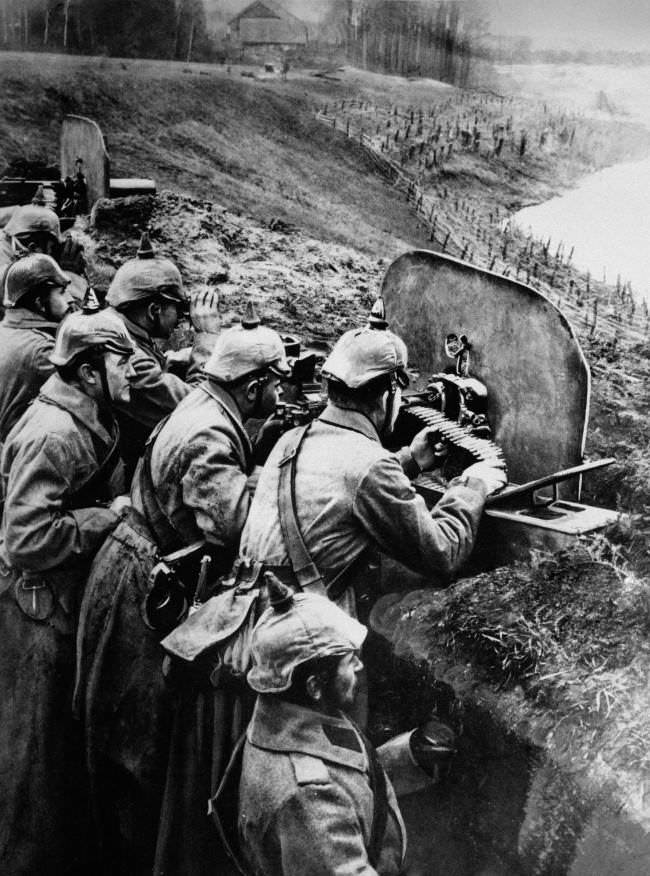
Their machine guns devastated the masses of Russians rushing at them in attack. By the end of the first winter one Russian in four went into the field without a gun. Here German infantrymen aim their machine guns at the Russians from a trench at the Vistula River in Russia, in 1916.
#40 A reinforced German concrete shell shelters in Belgium being inspected by French officers after the Franco-British drive on Oct. 28, 1917.
#41 Belleau Wood showing dead German soldiers in France .
#42 German troops advancing at the western front in 1918.
#43 A German position at the western front, with heavy artillery
#44 German troops advancing in Ham, France.
#45 Cheerful German prisoners in forage caps and waterproof capes surround a member of a visiting News Agency in an effort to cadge cigarettes. Western Front, 1918.
#46 The German Kaiser (3rd left) and the Emperor of Austria (2nd left) studying a map of Northern Italy during a visit to the Italian Front, 1918
#47 #48 Paul von Hindenburg, German Field Marshal and President, 1910s.
#48 This general view shows German shock troops about to advance at the western front during World War I.
#49 German army slaughtered pigs at Lille, France during World War I
#50 The gas war starts: German notices are posted up by German troops who fought at Armentiere, France in an undated photo, warning their comrades not to enter any houses or dug outs nor to drink the water.
#51 Germans celebrating Christmas in 1914.
#52 Kaiser Wilhelm II (right) and high-ranking German Army officers observe German Army maneuvers from beside a windmill before the outbreak of the First World War.
#53 The Crown Prince Wilhelm at his temporary residence, surrounded by his staff officers. 1914
#54
#55 Kaiser Wilhelm II asks a German officer about the position of the Red Army, 1915
#56
#57 Kaiser Wilhelm II of Germany sets the Thermos fashion for Zeppelin Huns who raided London, 1915
#58
#59
#60 Kaiser Wilhelm II reviewing Austro-Hungarian troops. 1916
#61 Baron Manfred von Richthofen, leader of Germany’s Flying Circus and airplane ace known as the “Red Baron” during World War I, is shown in this photo.
#62 A general view of Hamburg, Germany.
#63 Badly wounded WWI German army left behind to be picked up by ambulance.
#64
#65 Civilians with their portable possessions loaded on wagons, in the ruins of a town destructed in the first sweep of the Czar’s armies into German territory.
#66
#67
#68 An illustration of the SMS Dresden, which was a German Imperial Navy light cruiser of the Dresden class.
#69 William, the Crown Prince of Germany. He was also commonly called ‘Little Willie’.
#70 Kaiser Wilhelm II in conversation with an officer. On the left is General von Einem.
#71 Kaiser Wilhelm II as the ‘new King of the Belgians’.
#72 Kaiser Wilhelm II leaves Berlin for the Front.
#73 The Crown Prince Wilhelm at his temporary residence, surrounded by his staff officers.
#74 German soldiers are vaccinated in Berlin at the beginning of the First World War.
#75 A German policeman posts a mobilisation order in Berlin at the beginning of the First World War.
#76 Pedestrians read war news on the Unter Den Linden in Berlin.
#77 At the Austrian Headquarters, Kaiser Wilhelm II talks to the Archduke Frederick of Austria, who is celebrating his 59th birthday.
#78 A flotilla of German submarines (U-Boats) and torpedo boats heading out to sea.
#79 A Short Brothers S.81 Seaplane, as used during the air raid on the Zeppelin sheds at Cuxhaven, Germany in December 1914.
#80 Cuirassiers on foot, advancing on the German front lines in Germany.
#81 Kaiser Wilhelm II of Germany sets the Thermos fashion for Zeppelin Huns who raided London.
#82 Kaiser Wilhelm II, Crown Prince Wilhelm and Prince Oscar (far right, looking down), standing in front of the Crown Prince’s headquarters
#83 Kaiser Wilhelm II on horseback in 1915.
#84 A drawing of Kaiser Wilhelm II by war artist Willy Scheuermann.
#85 Kaiser Wilhelm II surrounded by his general staff.
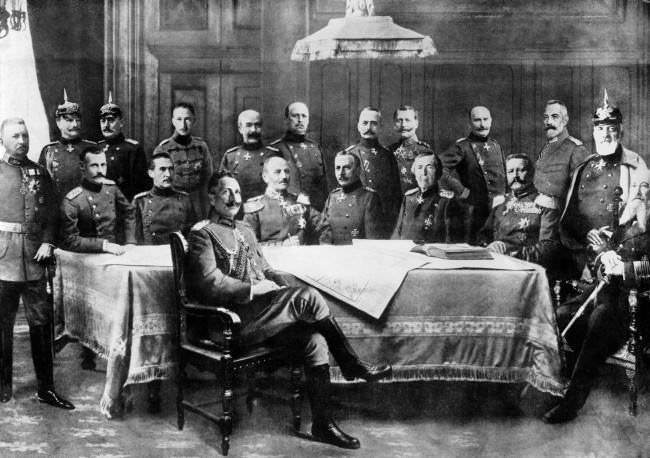
Standing (from left to right): Bulow, Mackensen, Molkte, Crown Prince Wilhelm, General Francois, Lumenoff, Falkennayn, Einem, Baseler, Chancellor Bathmann Hollweg, Heringen. Seated (from left to right): Crown Prince of Bavaria, Duke Wurtemburg, General Kluck, Emmich, Haeseler, Hindenburg, Admiral Tirpitz.


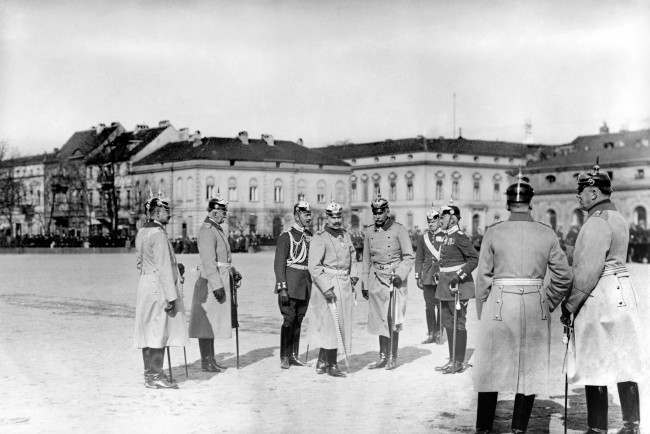
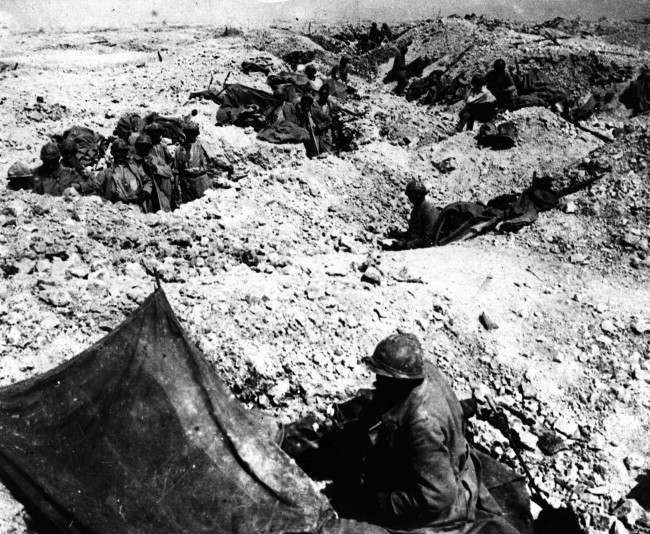
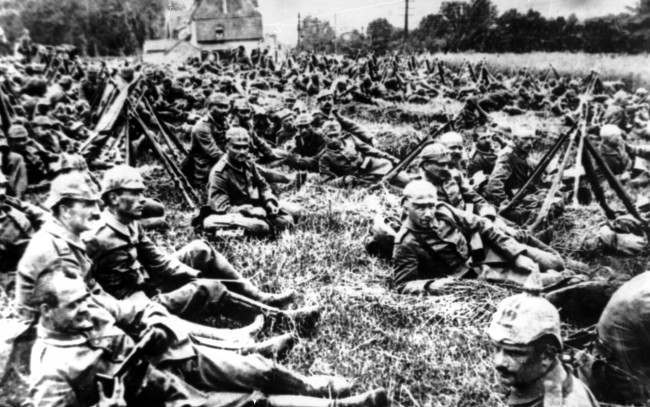
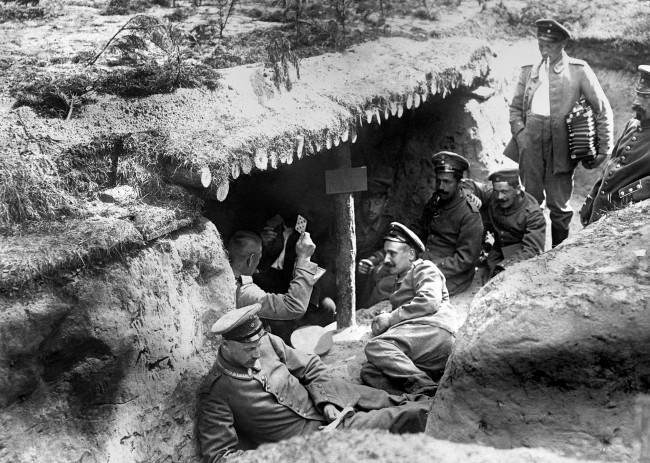
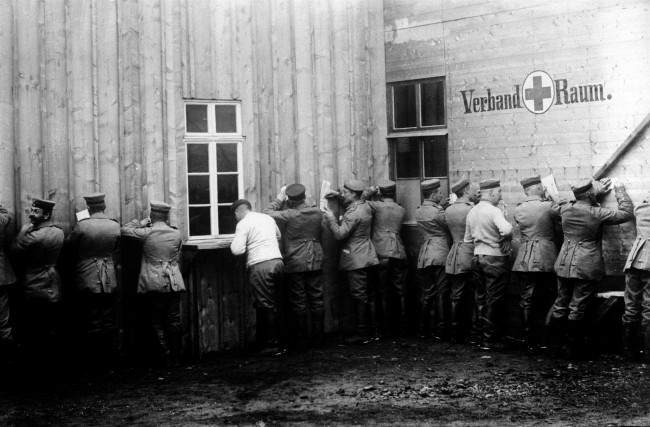
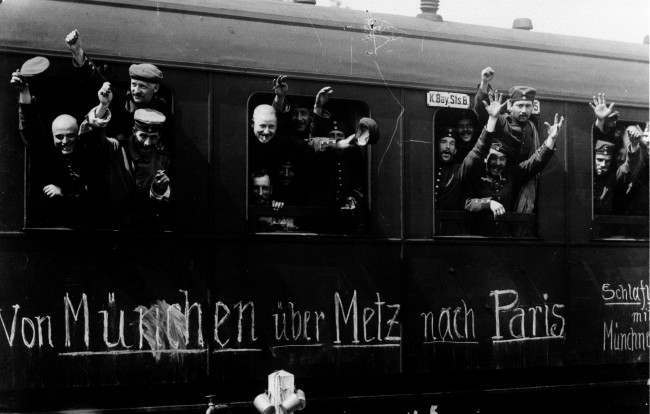
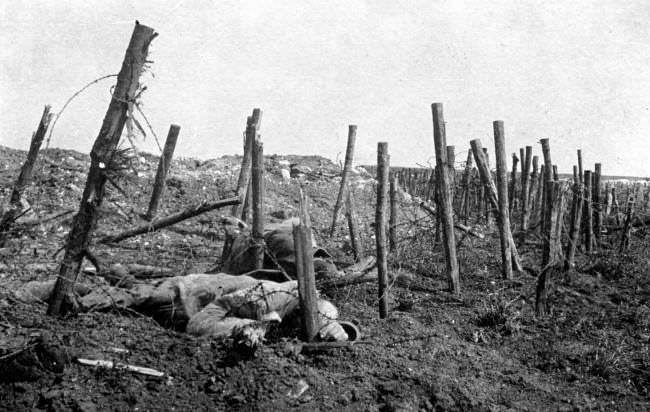
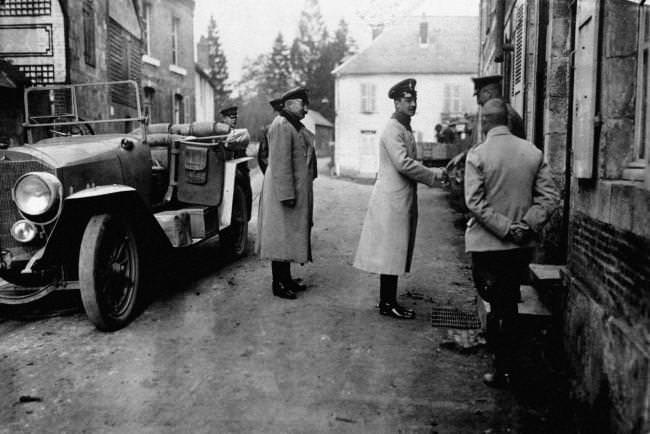
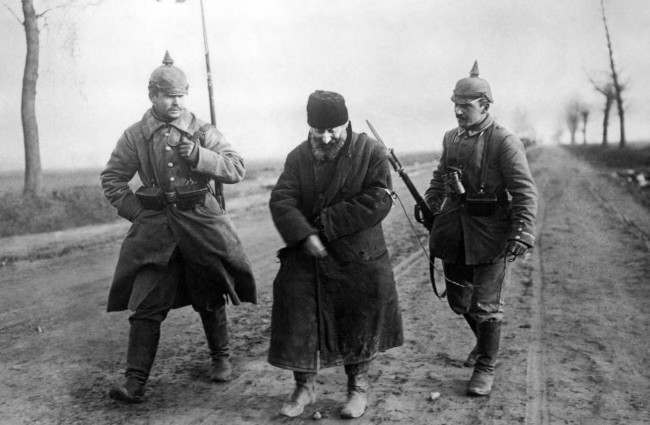
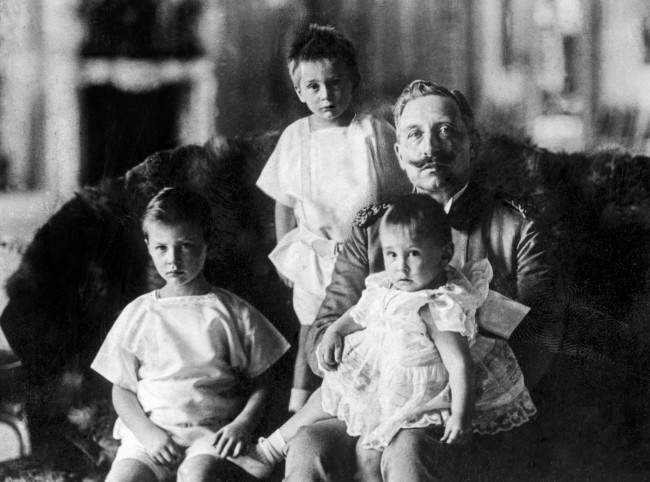
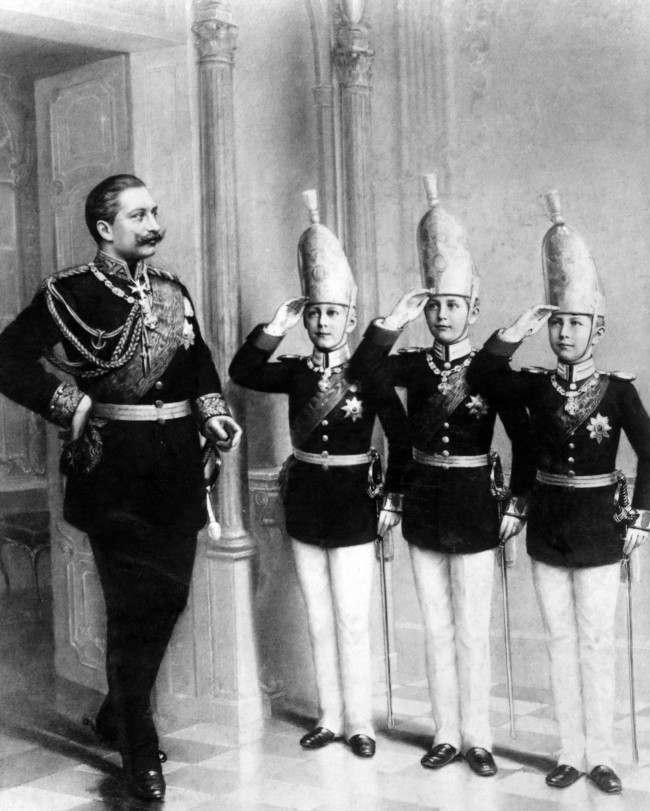
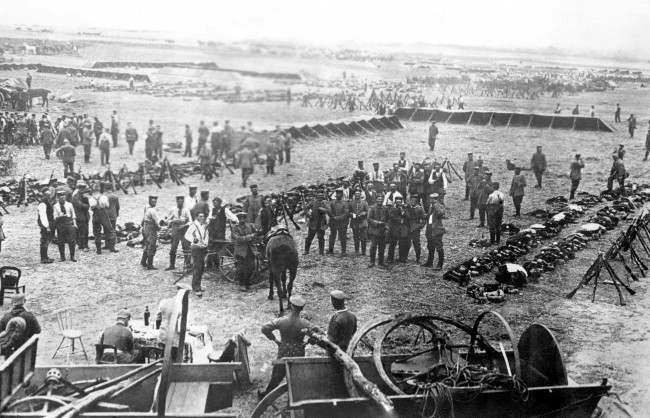
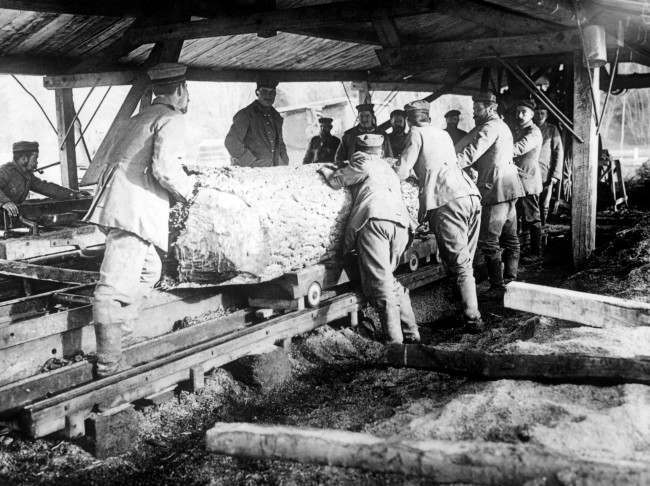
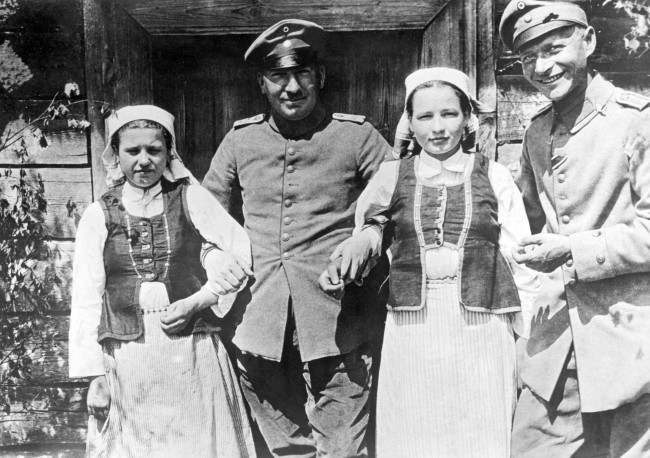
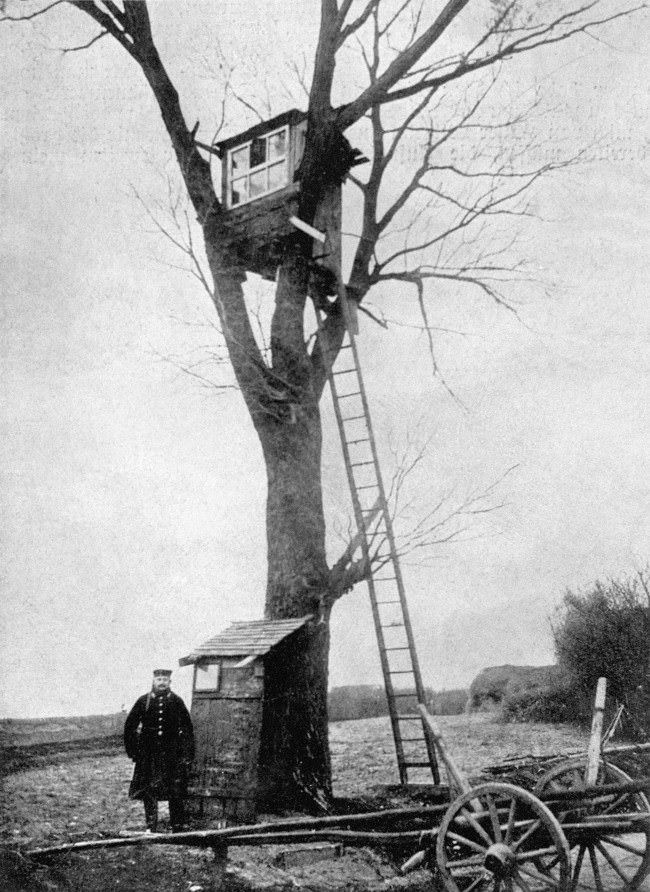
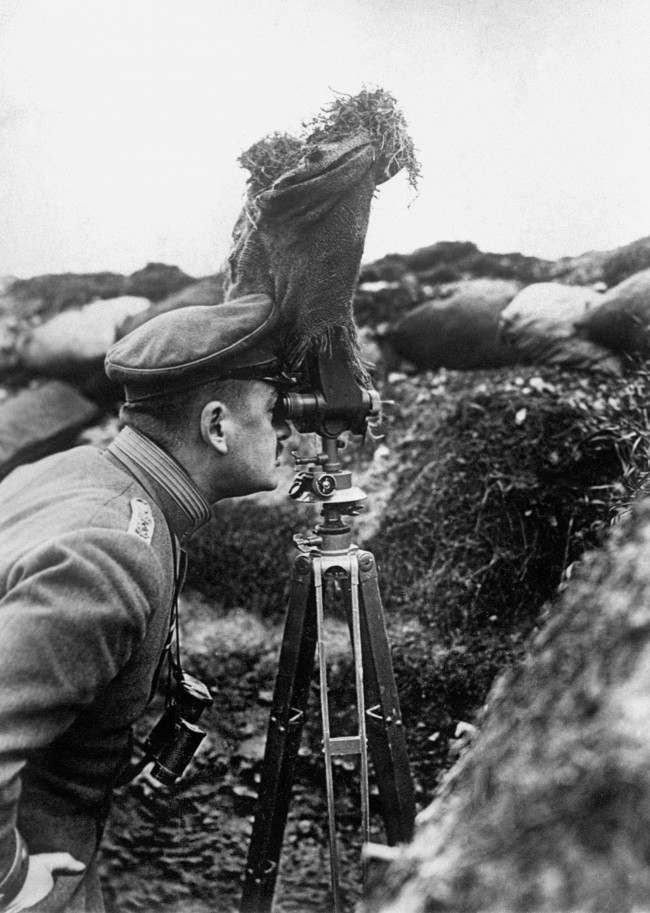
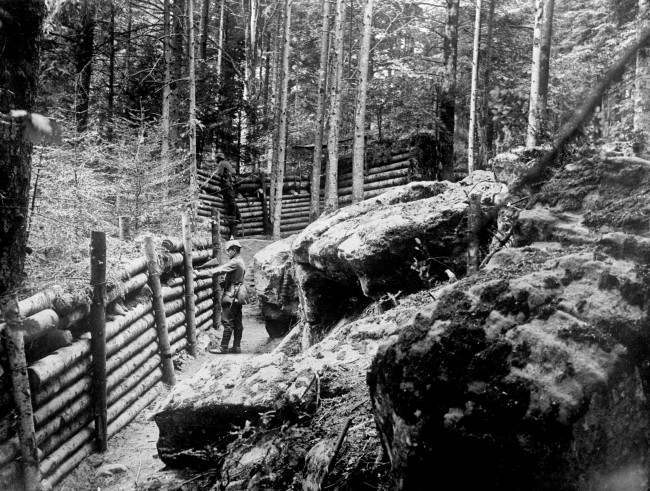
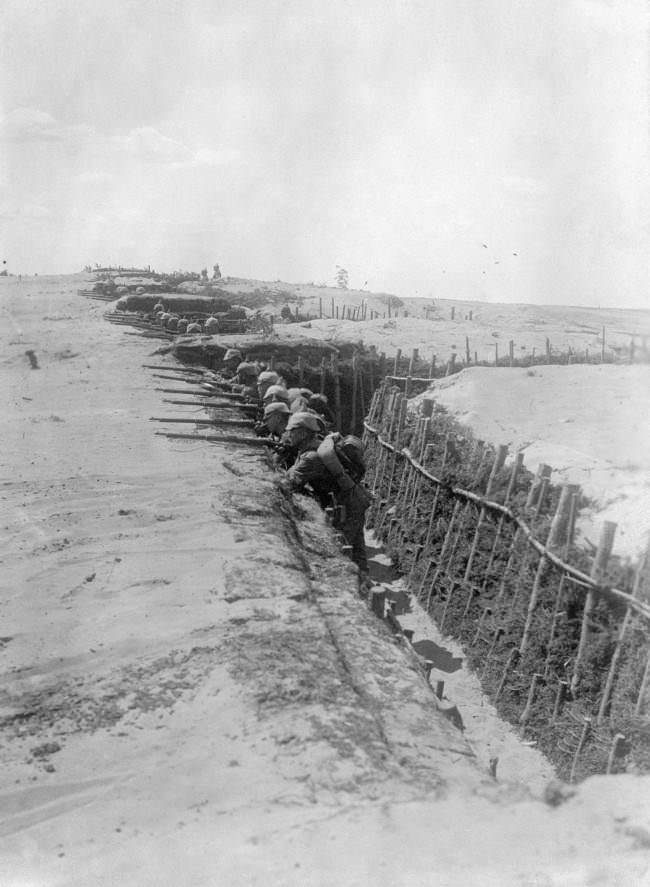
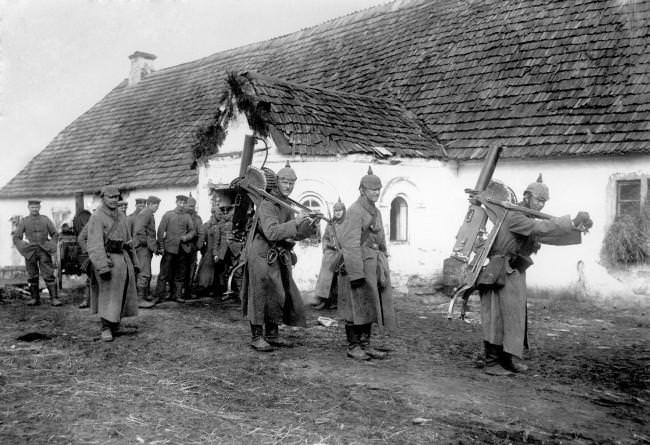
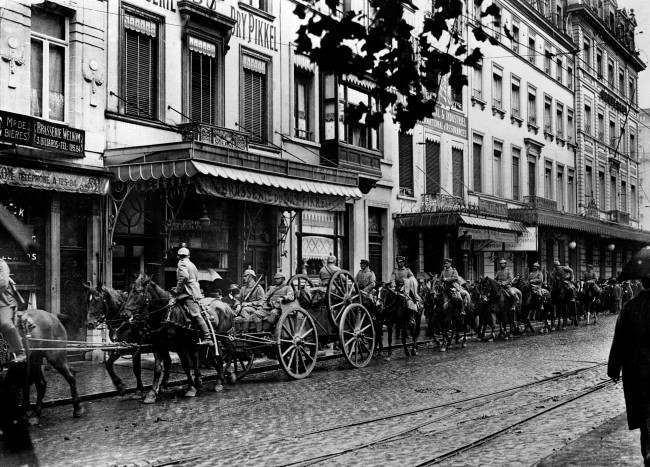
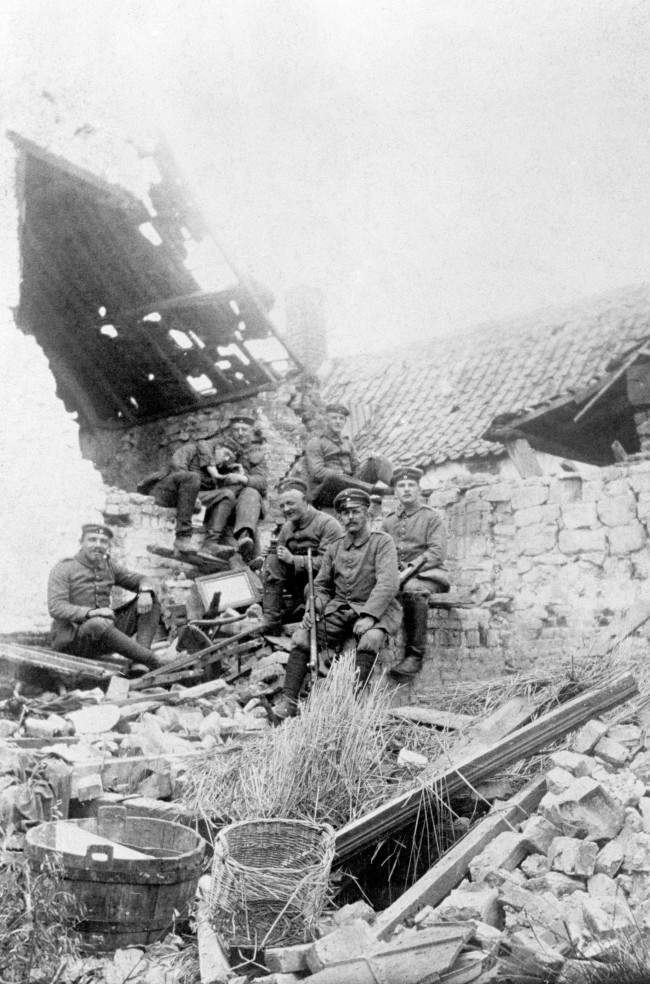
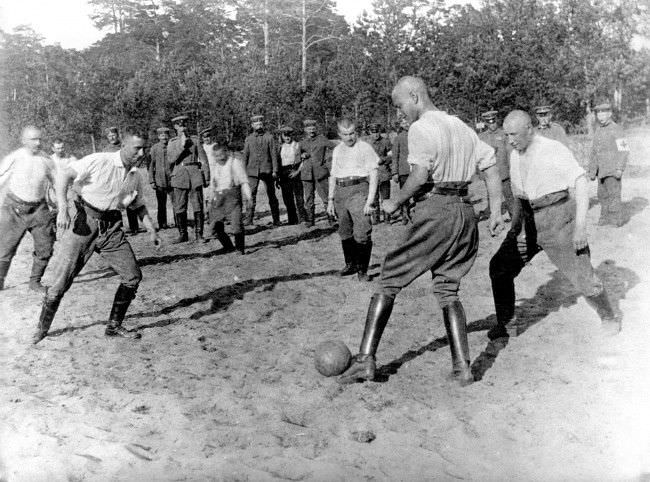
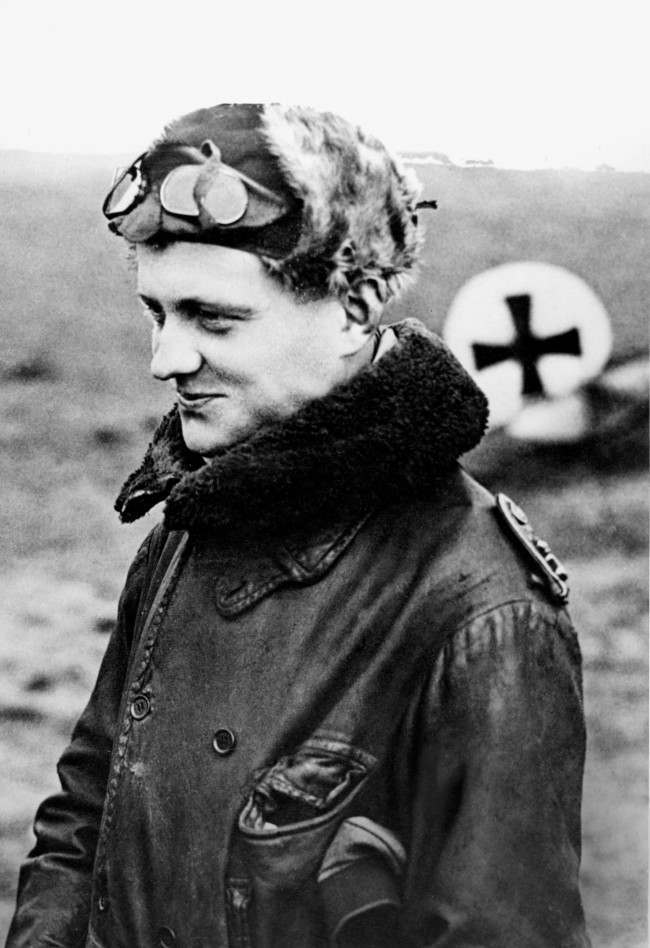
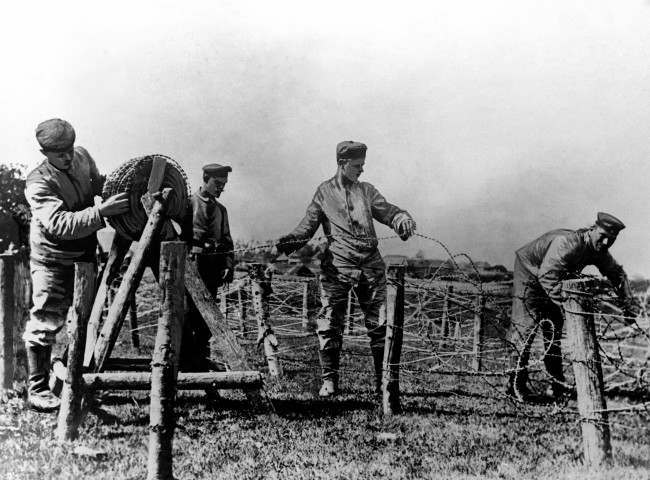
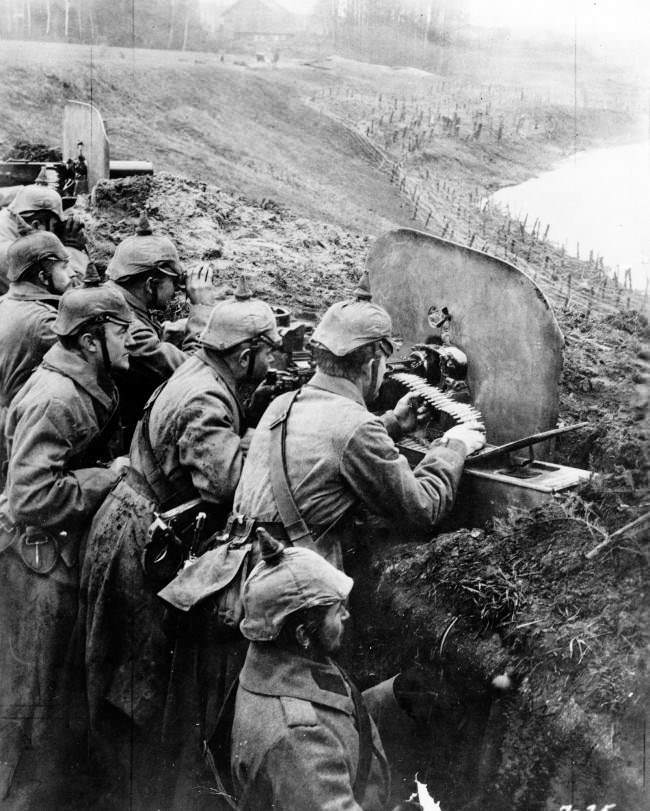
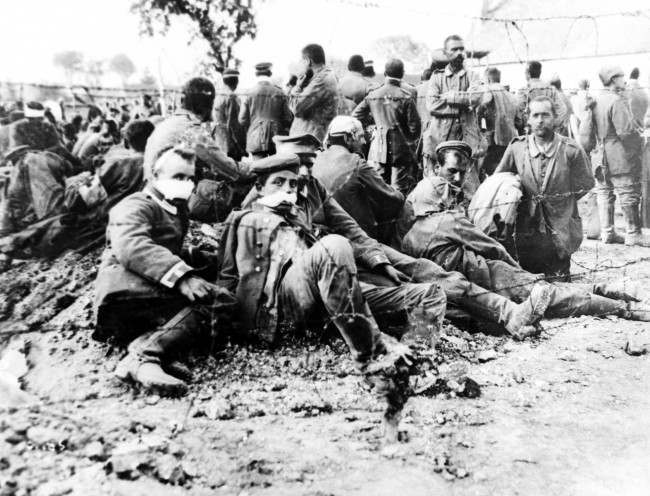
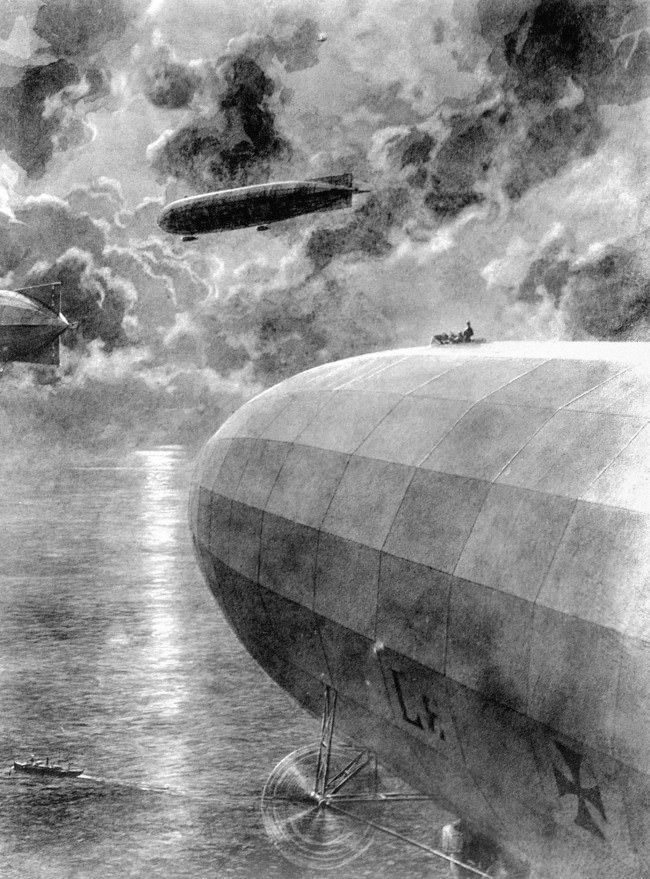
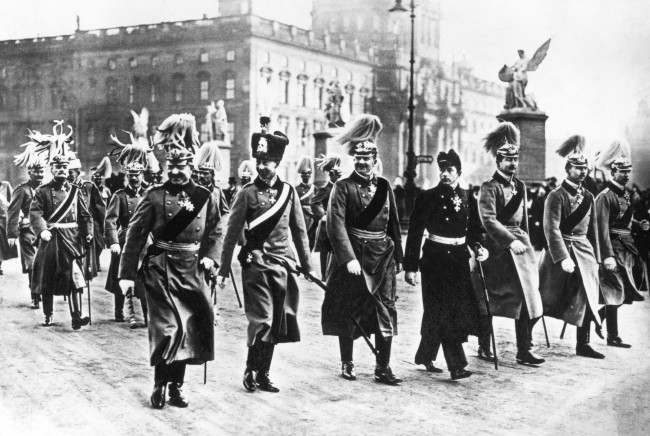
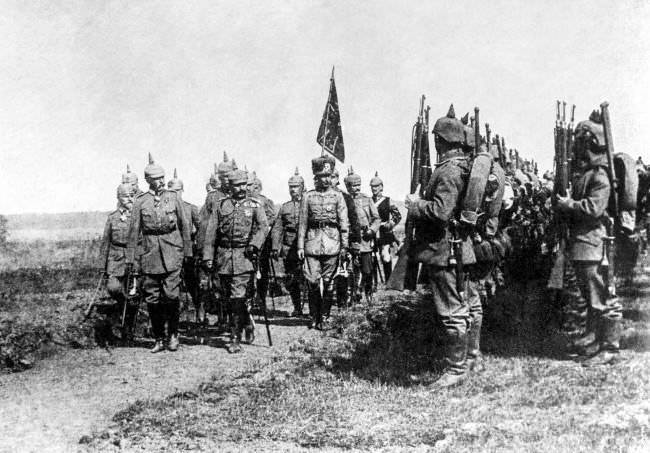
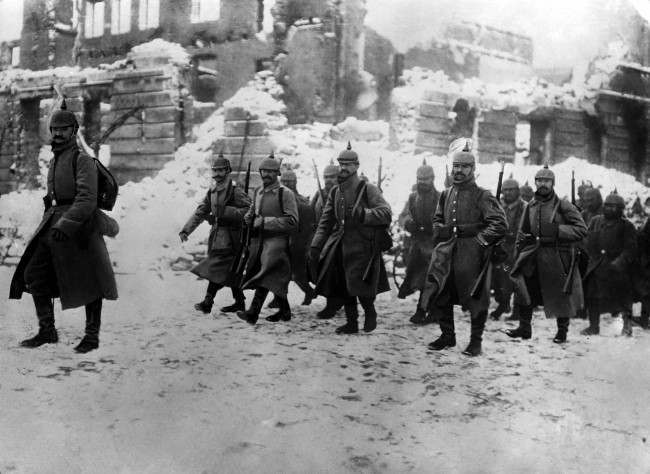
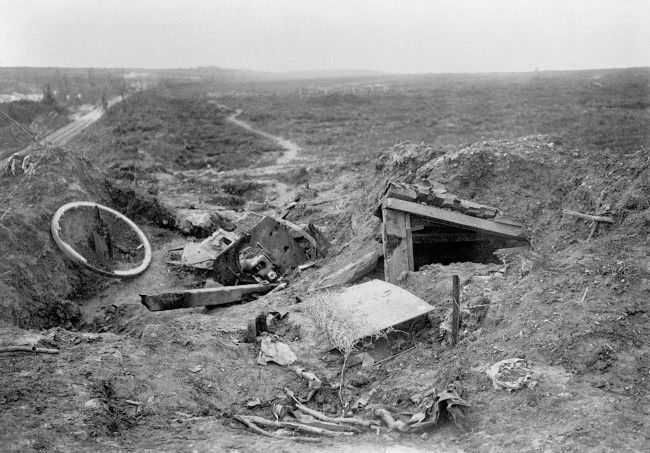
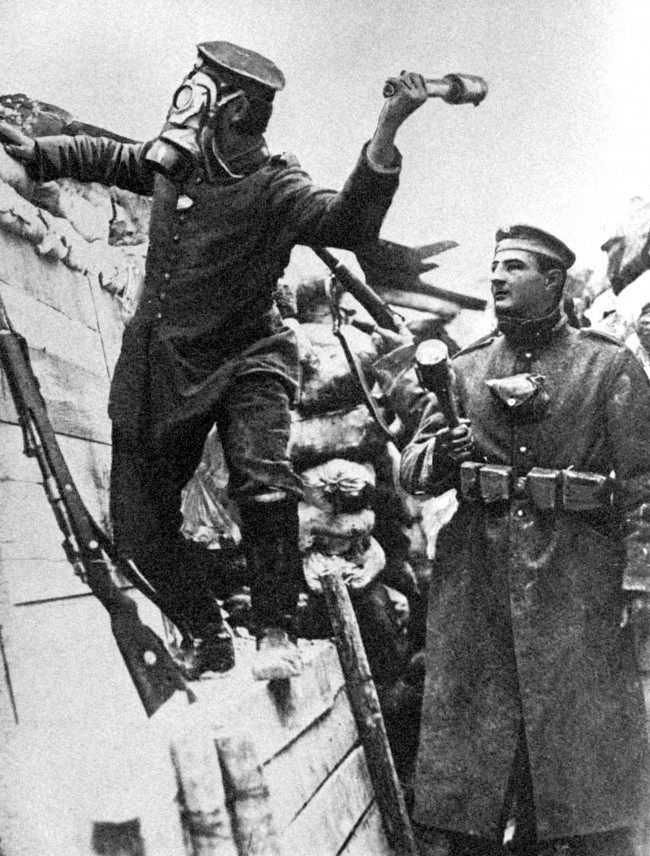
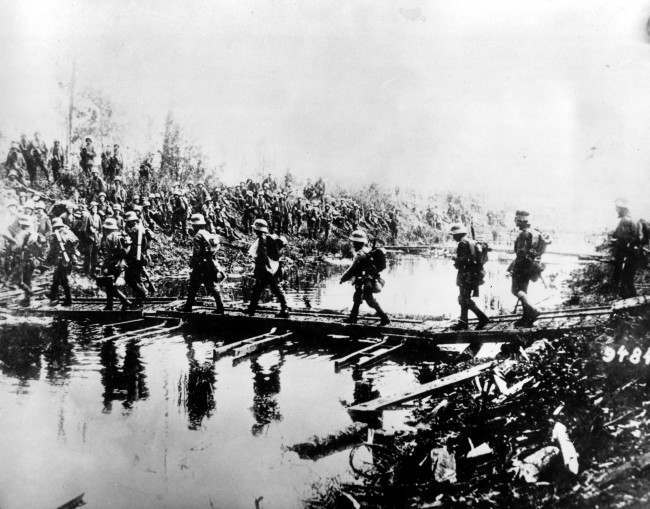
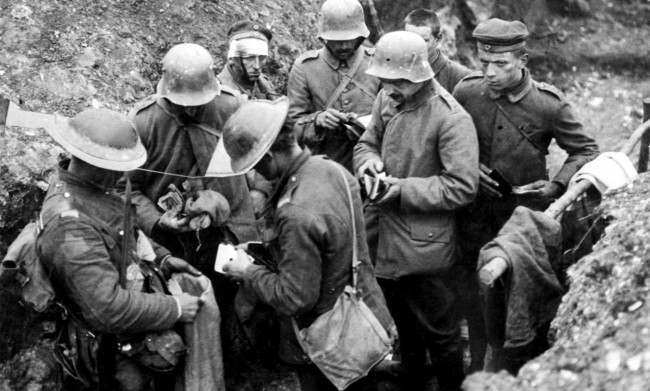
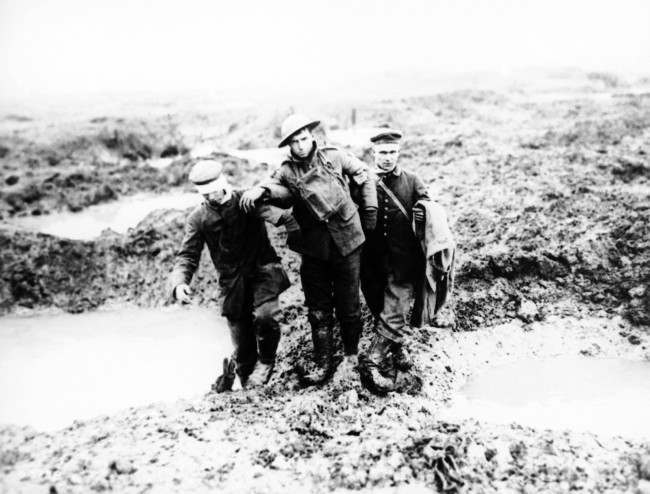
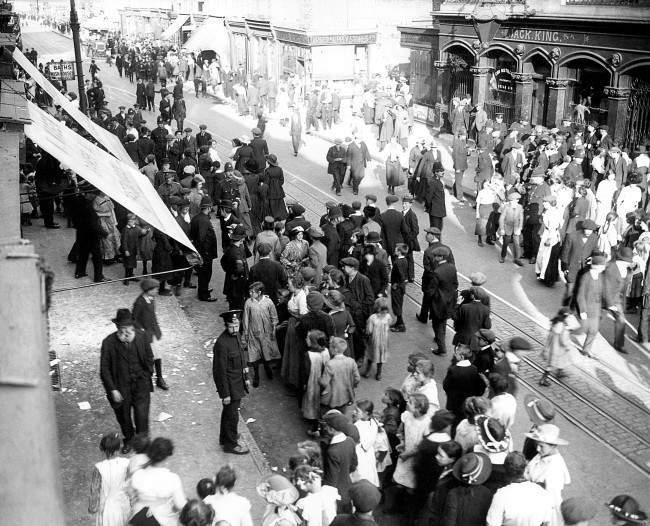
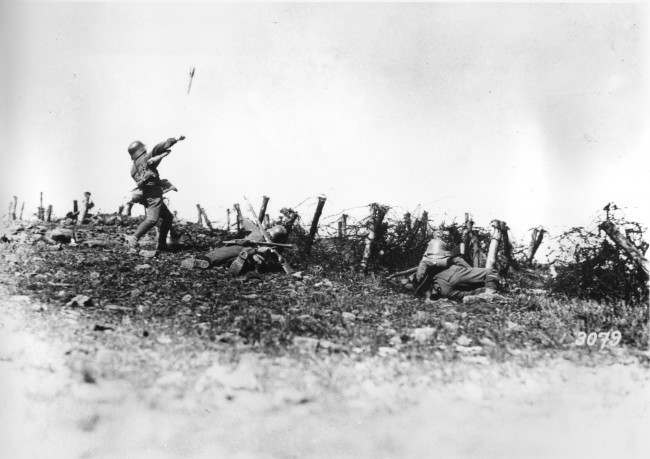
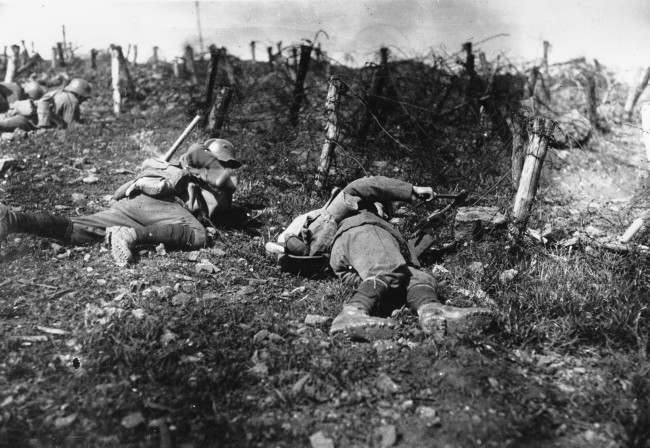
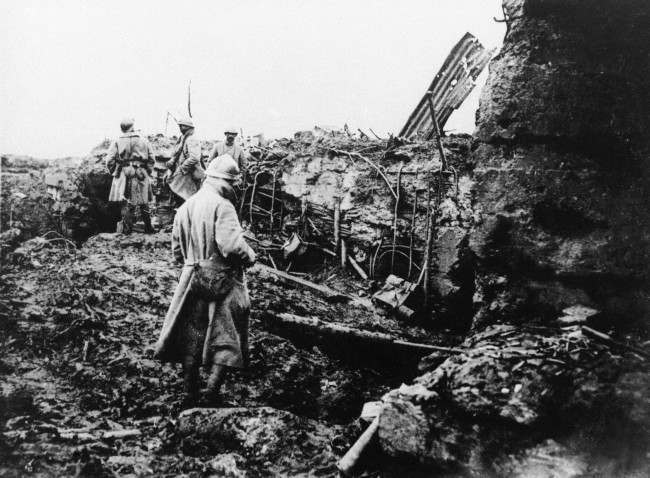
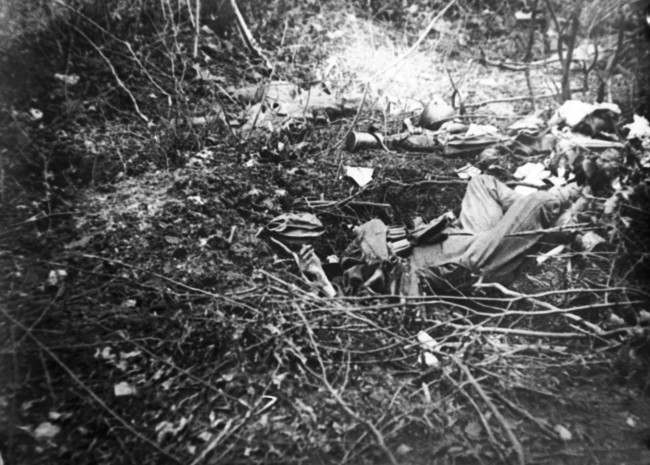
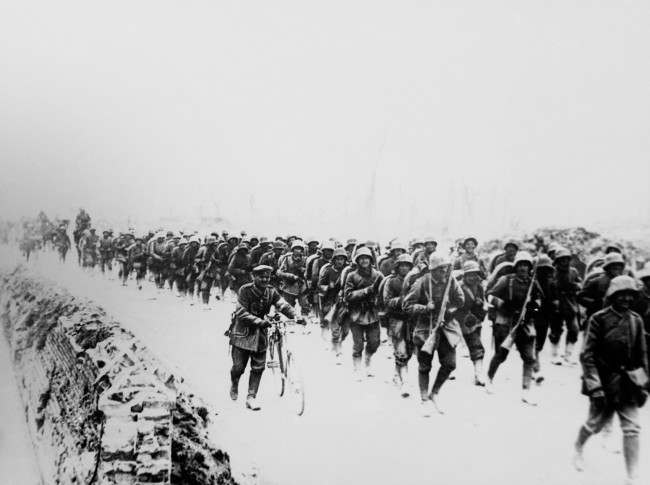
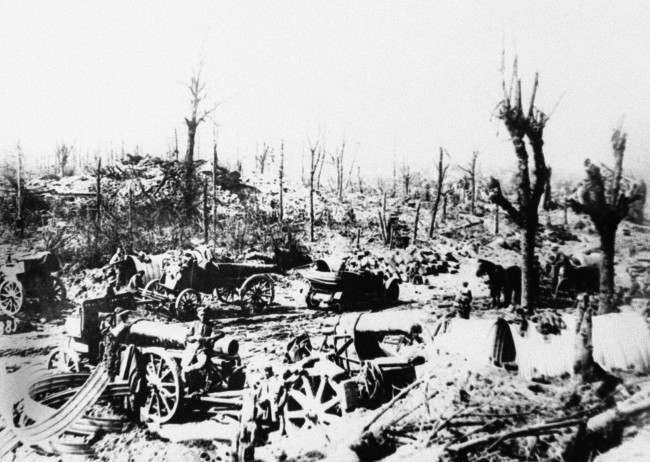
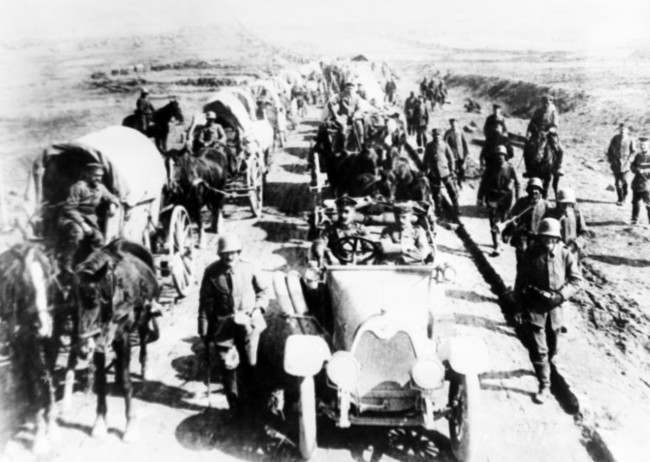
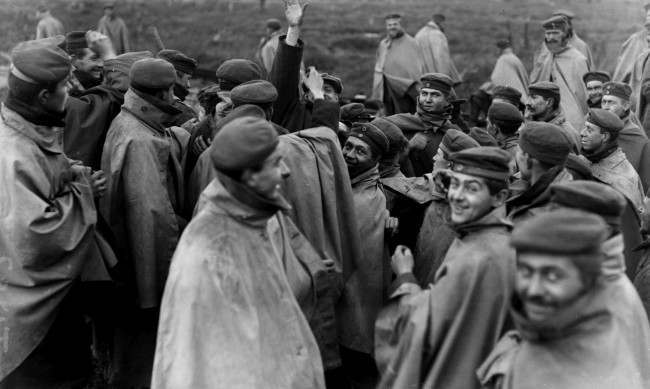
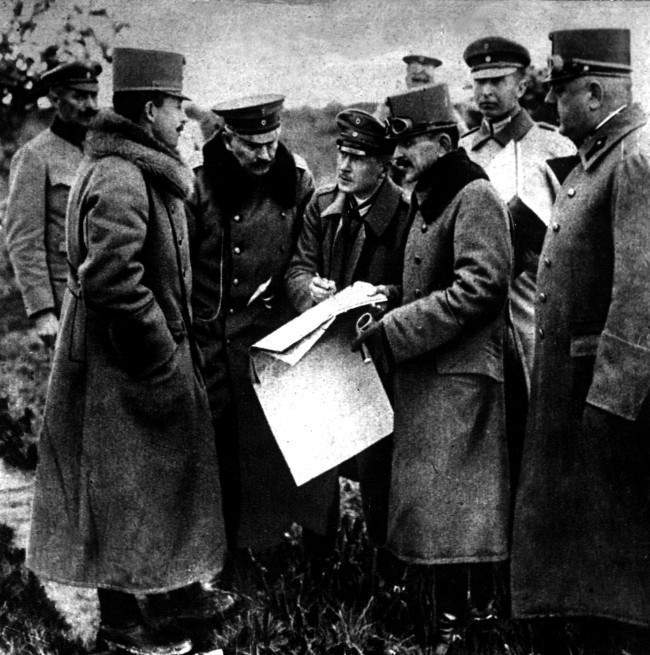
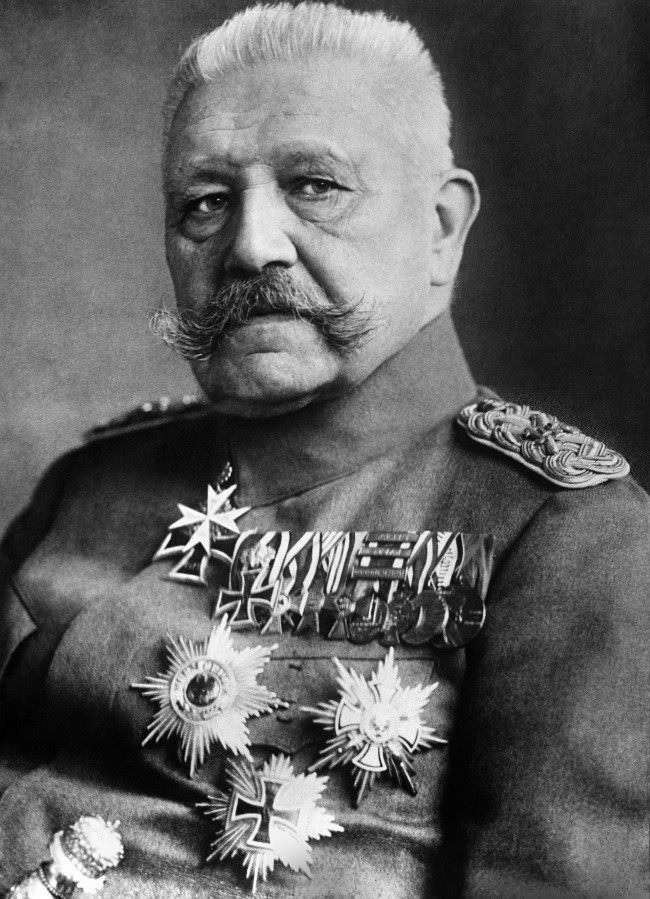
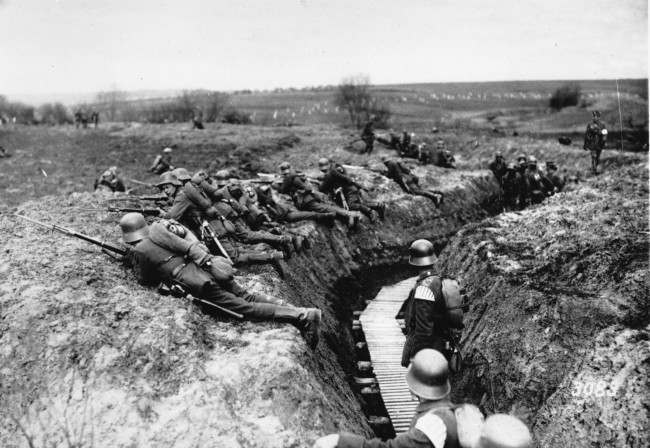
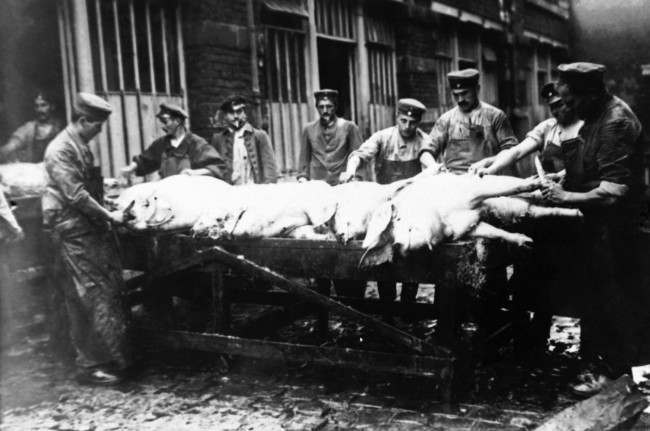
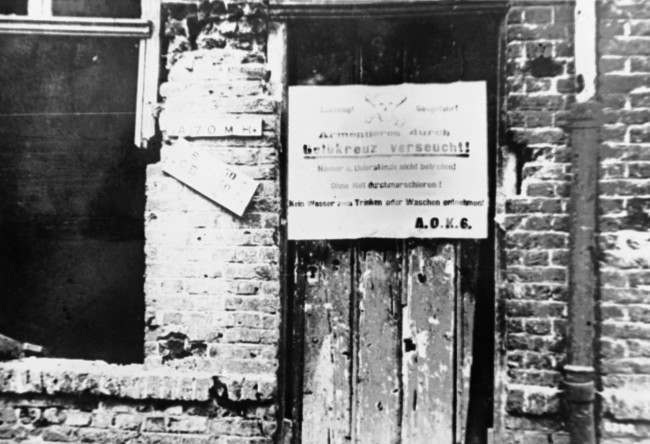
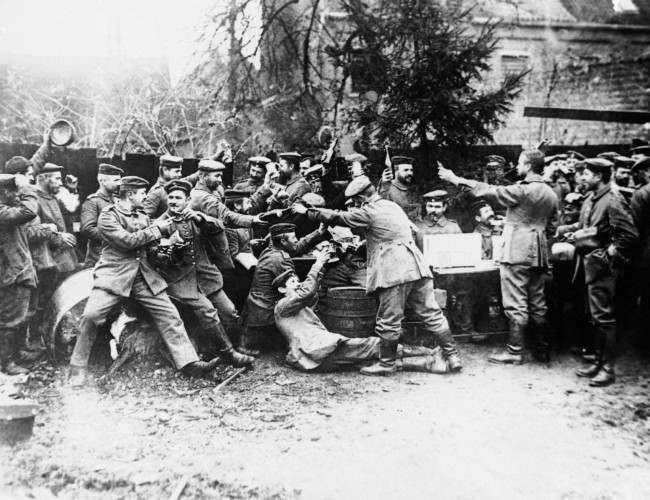
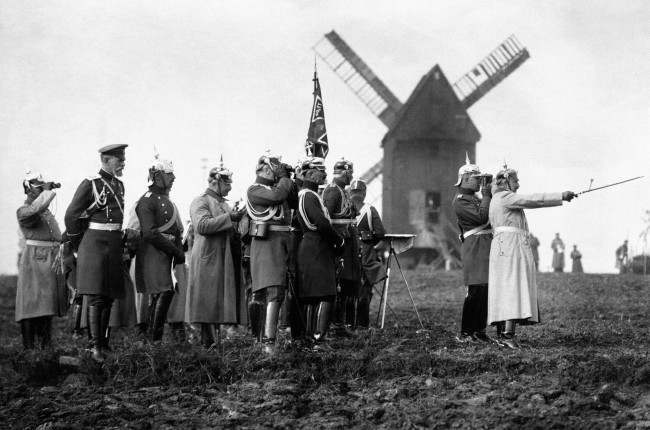
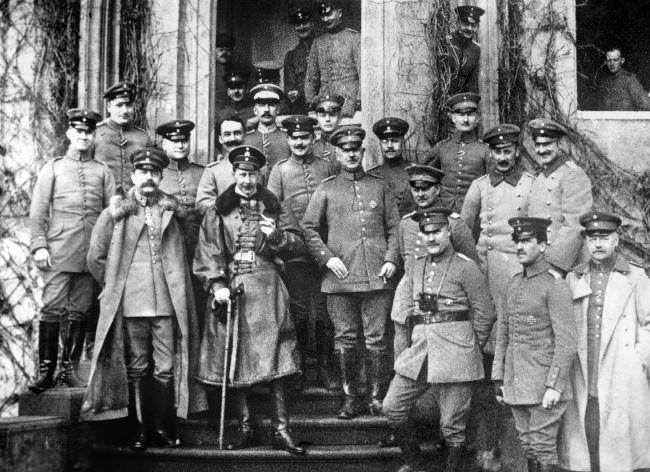
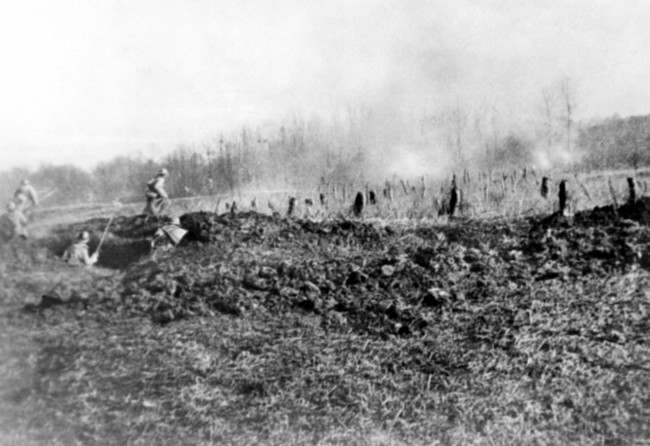
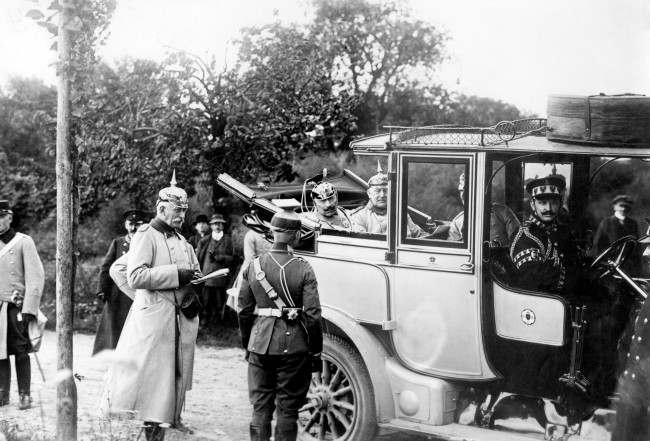
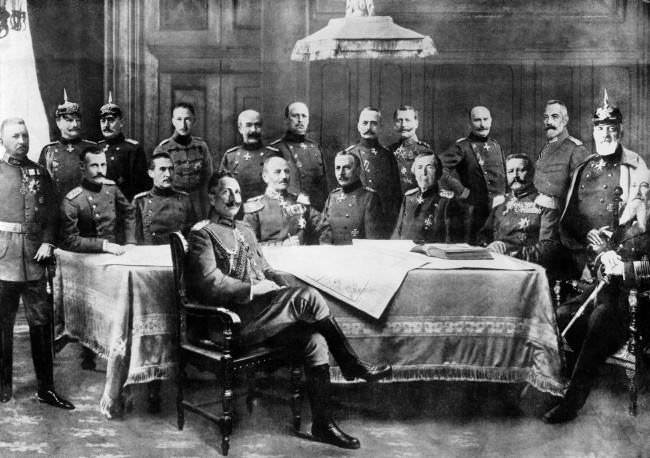
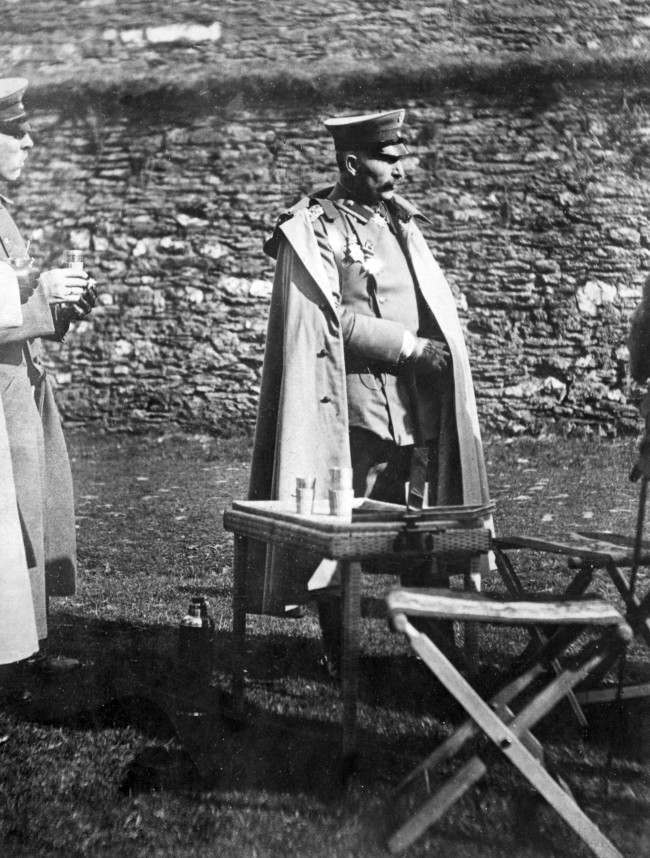
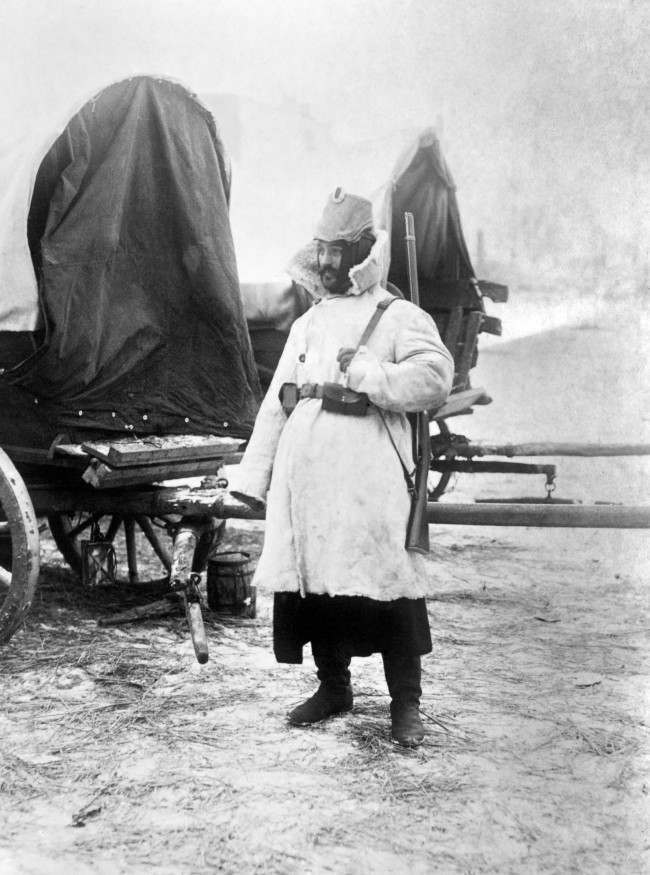
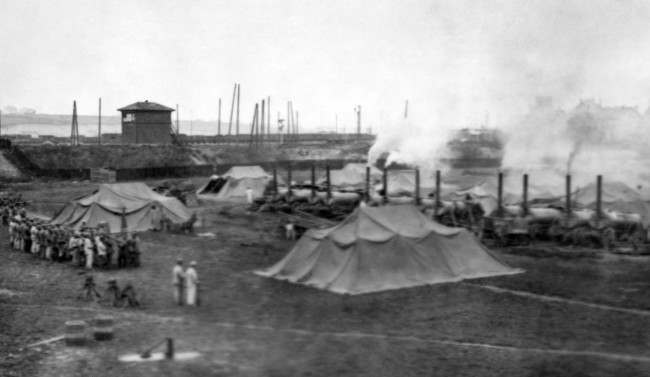
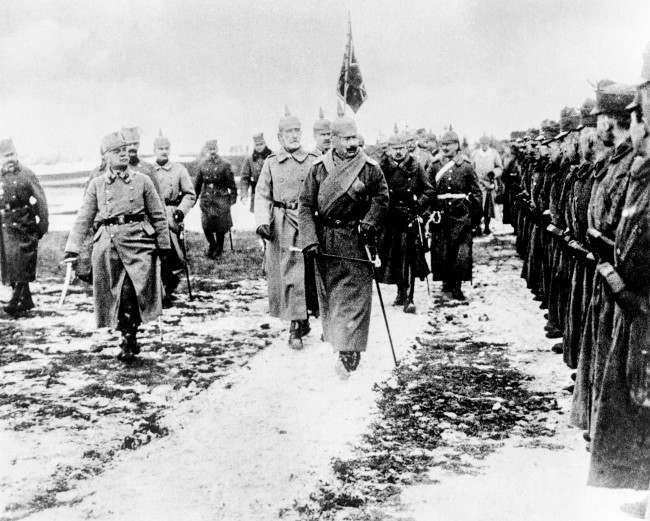
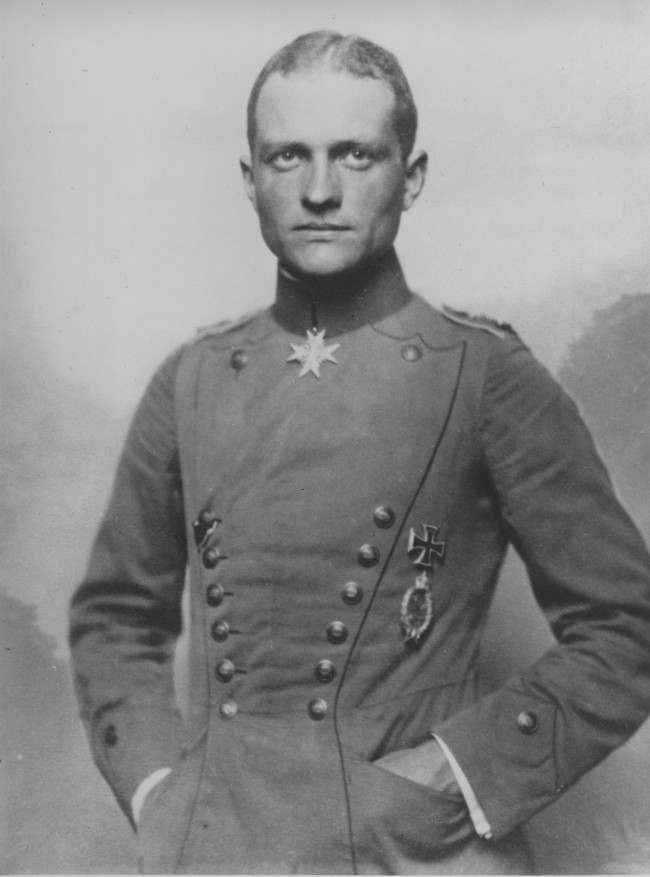
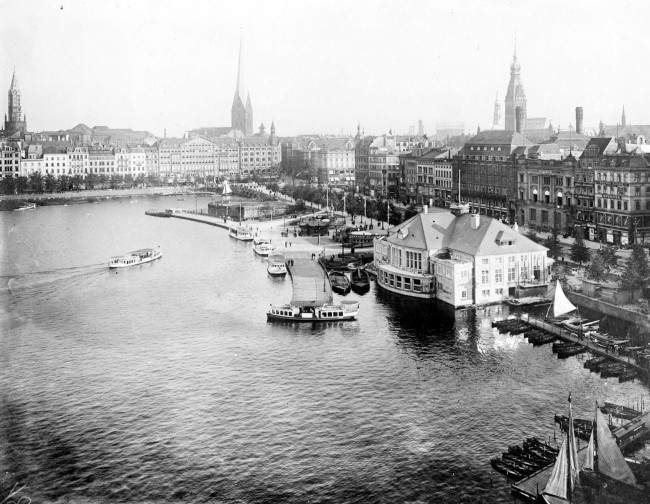
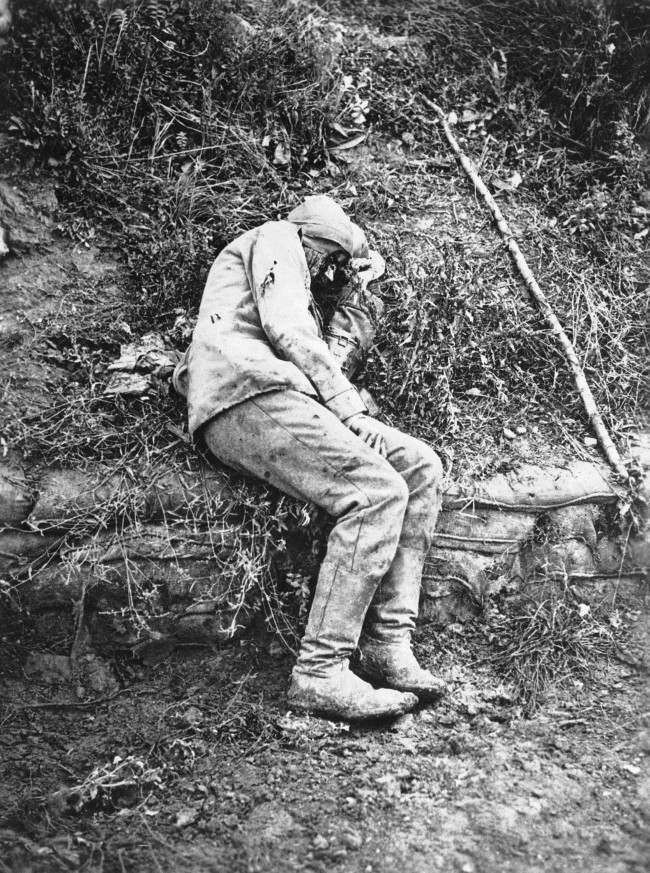
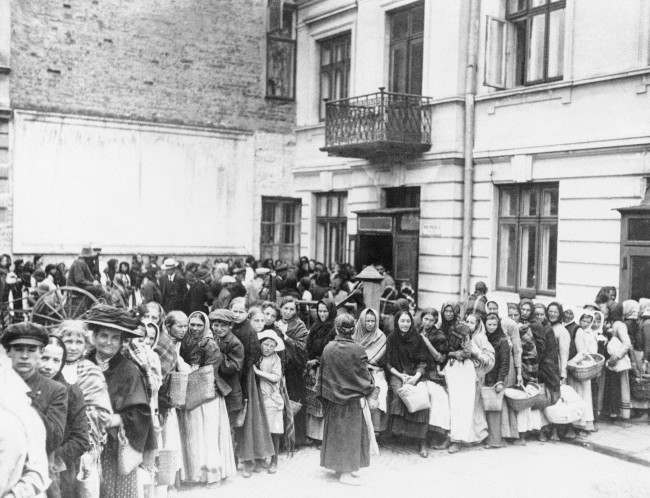
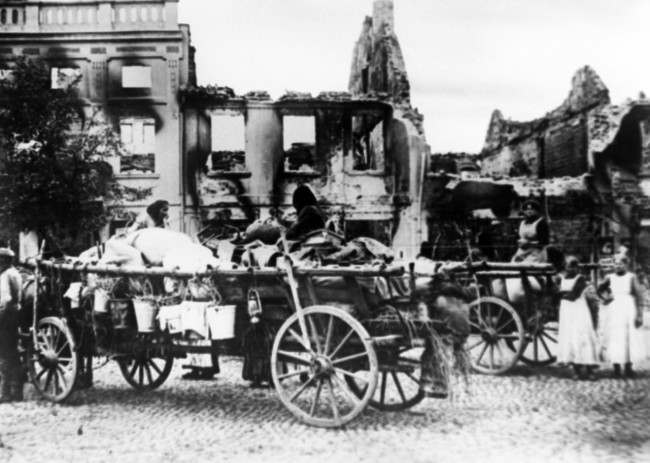
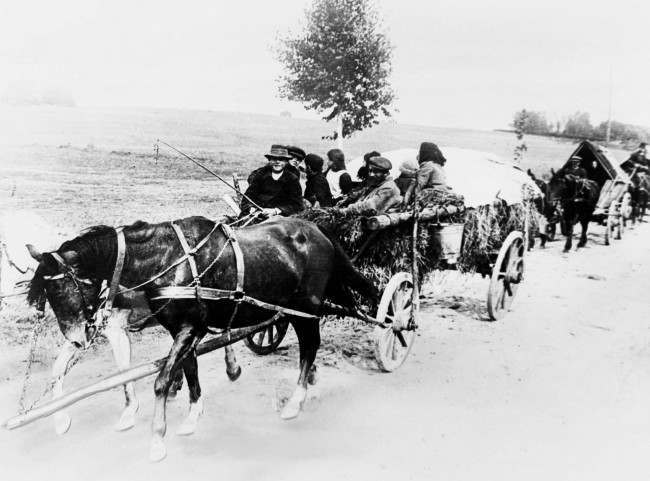
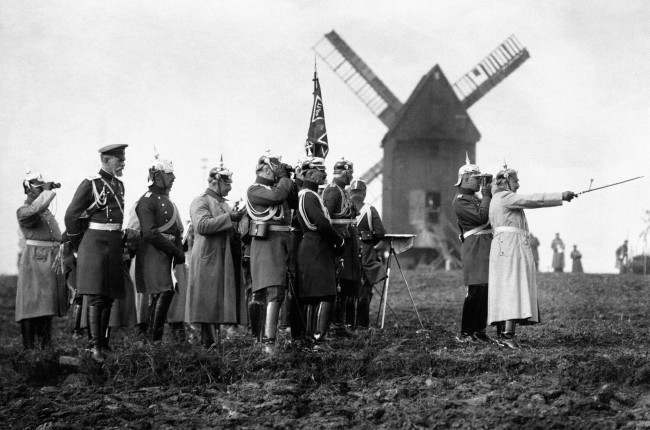
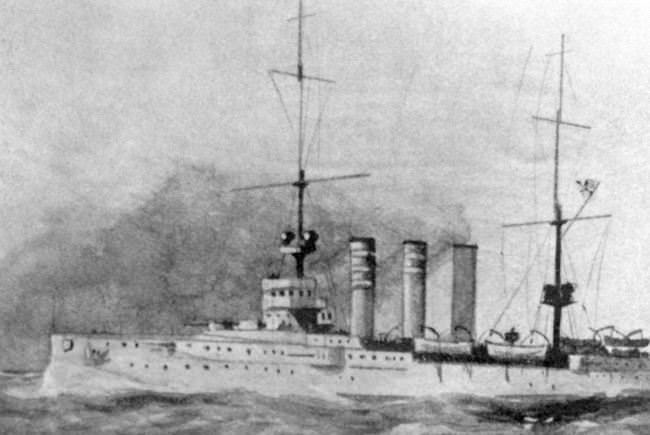
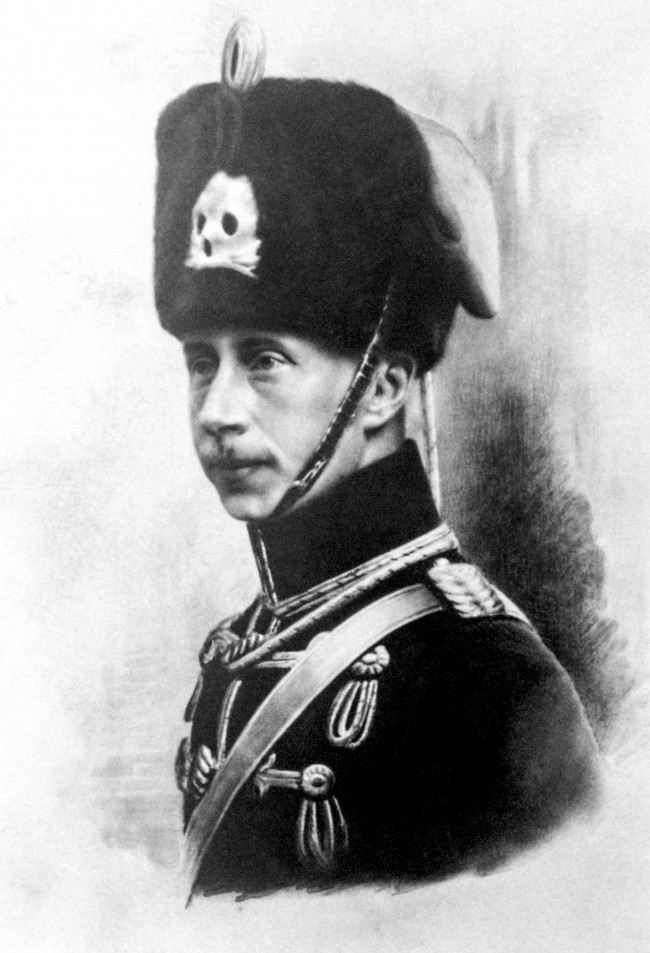
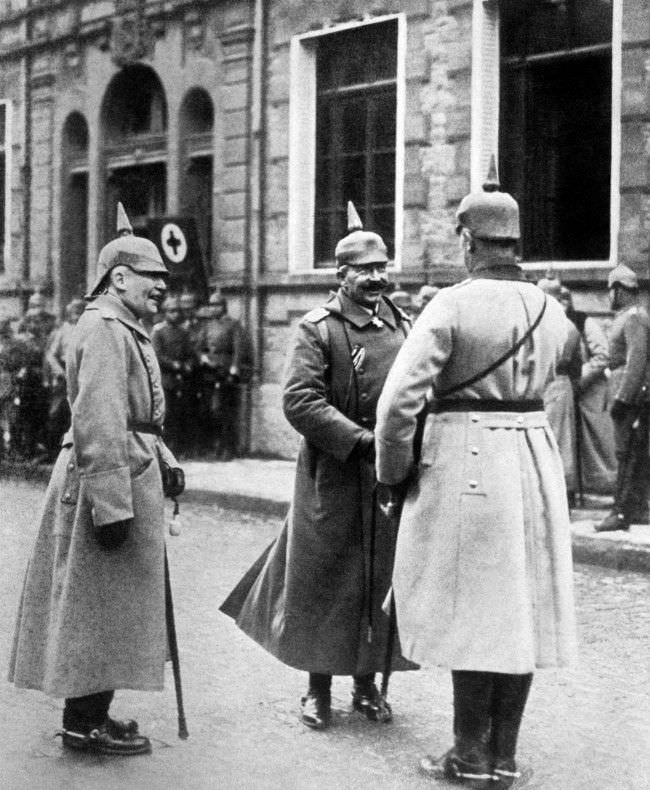
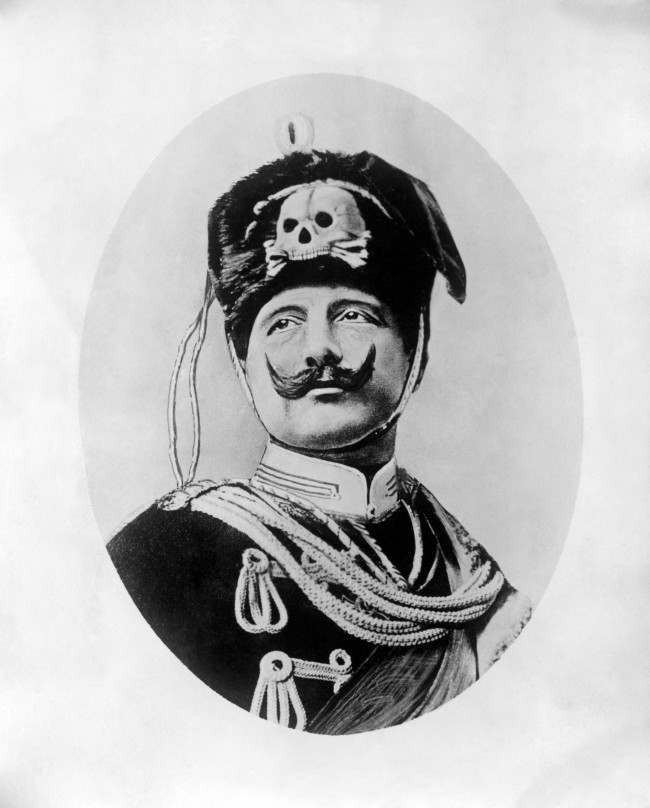
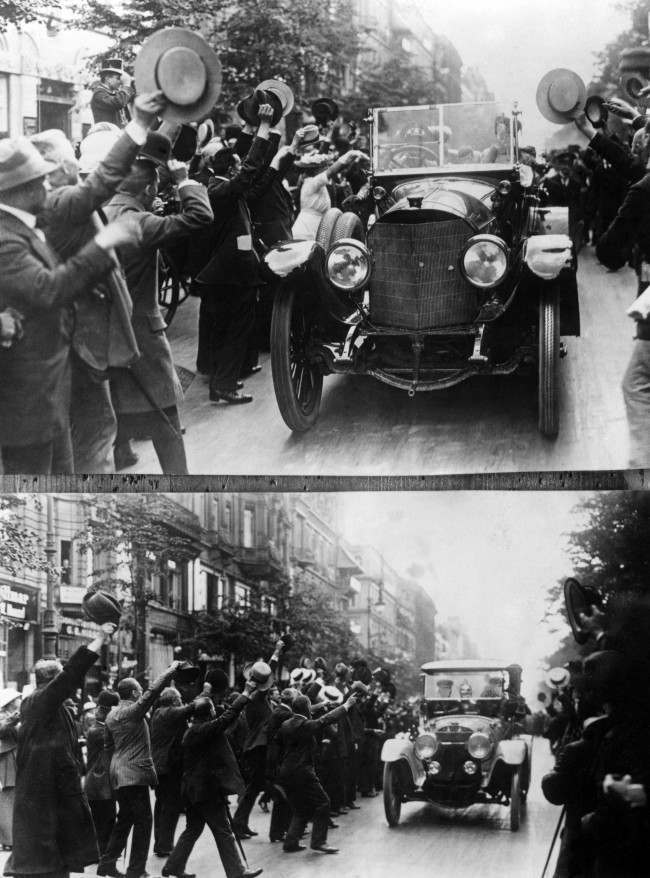
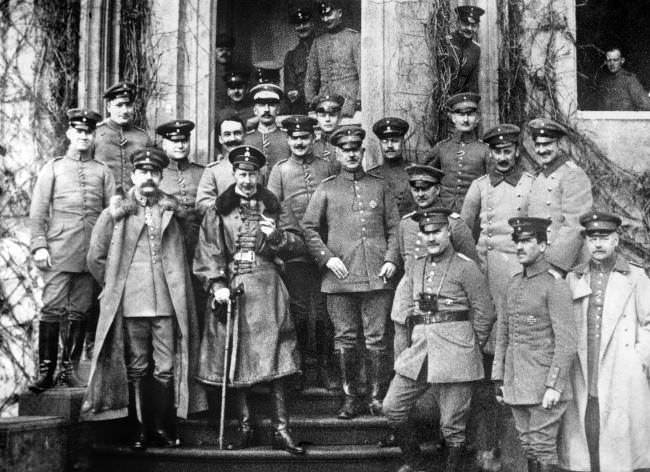
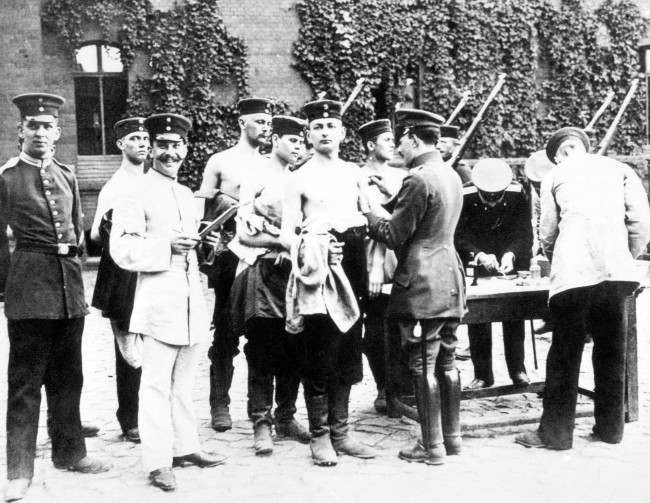
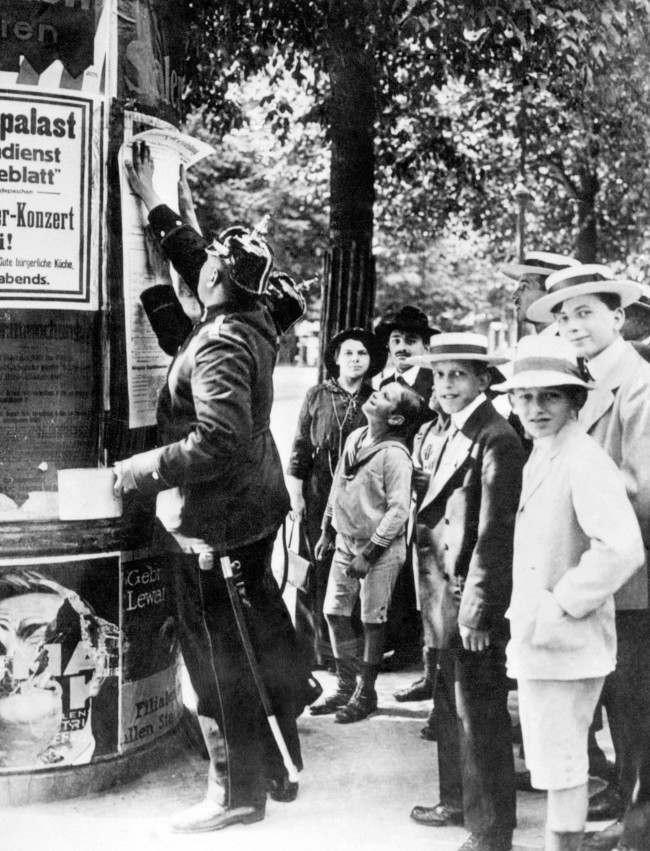
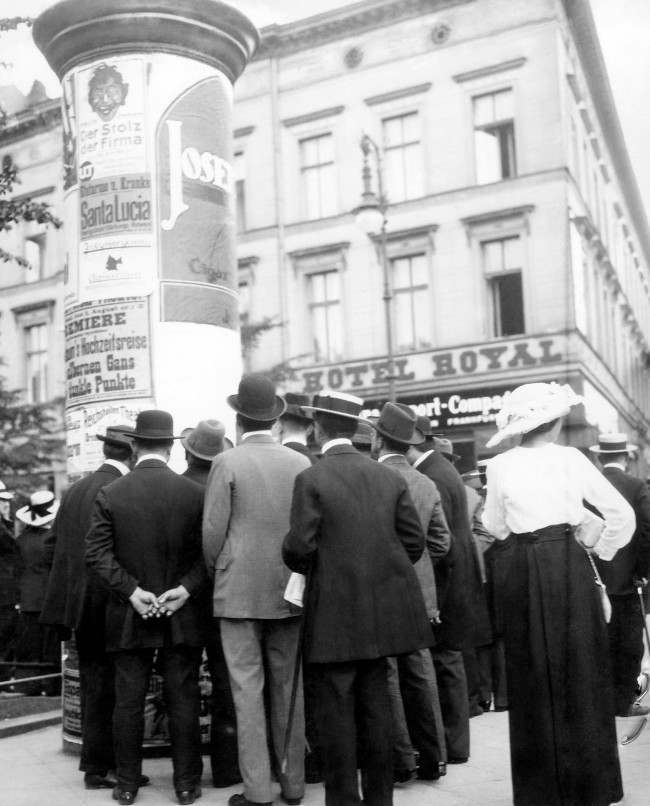
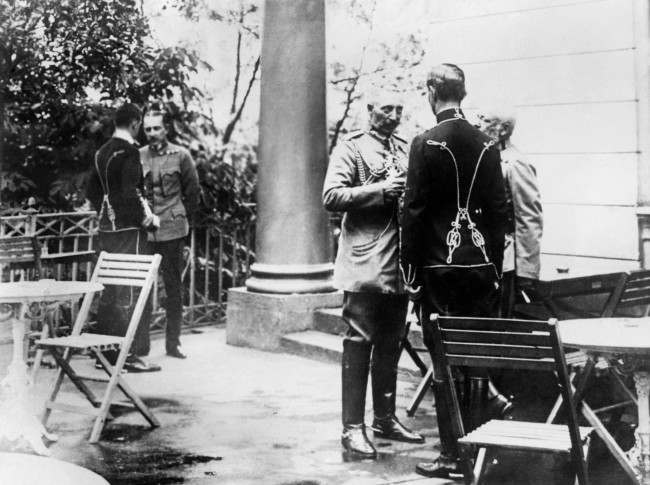
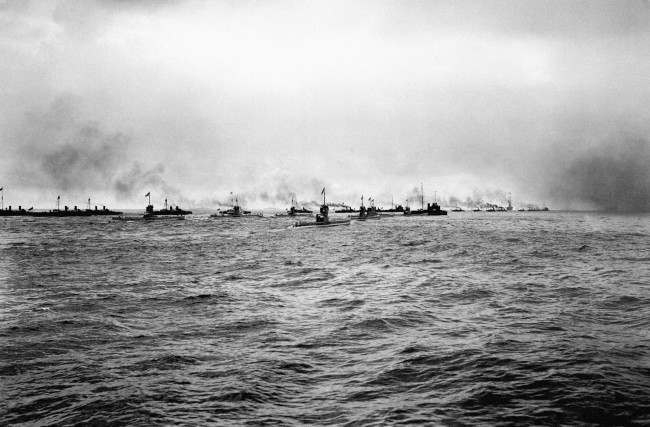
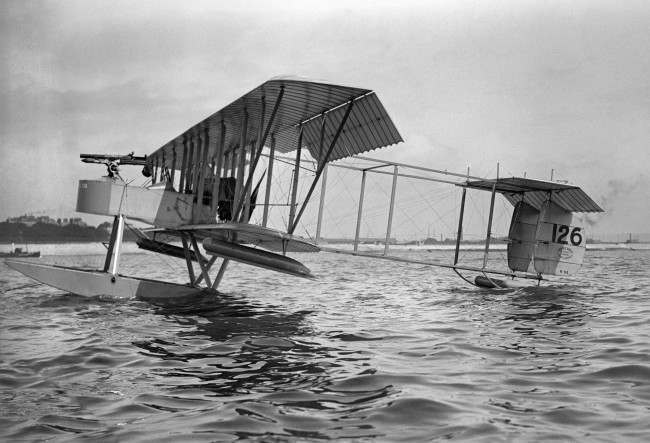
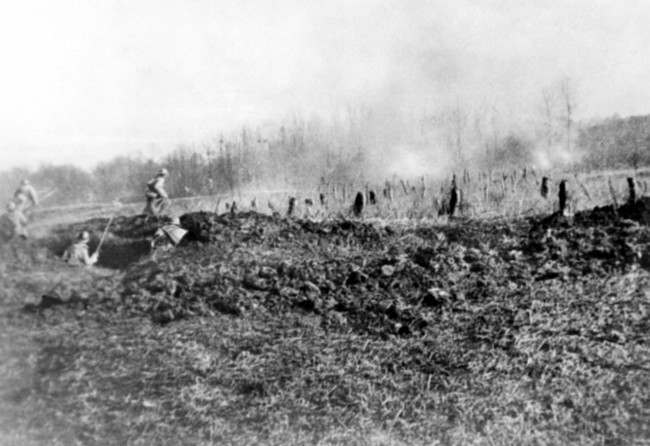
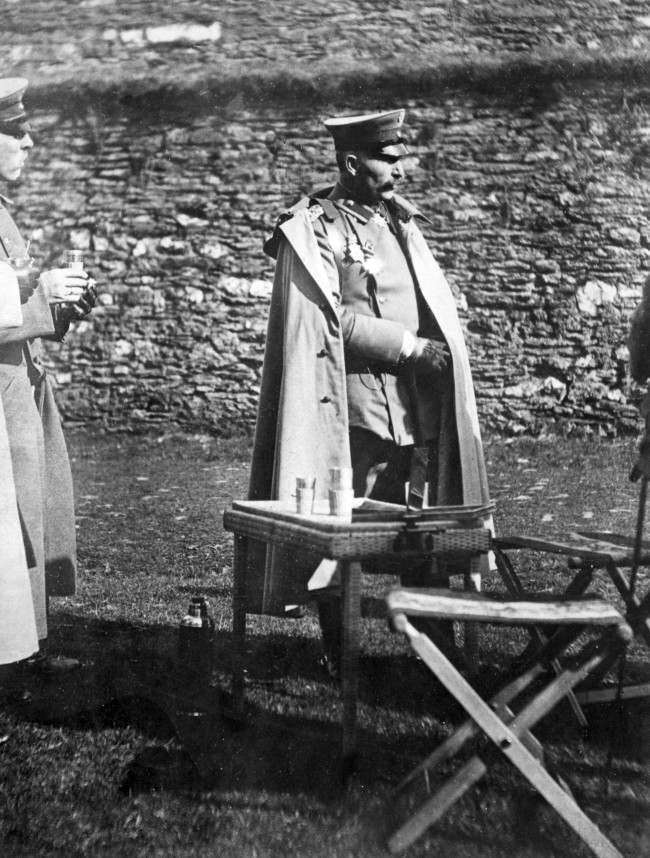
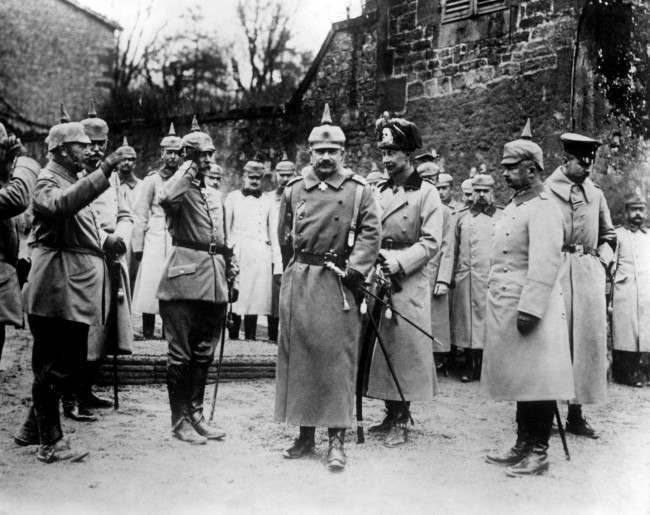
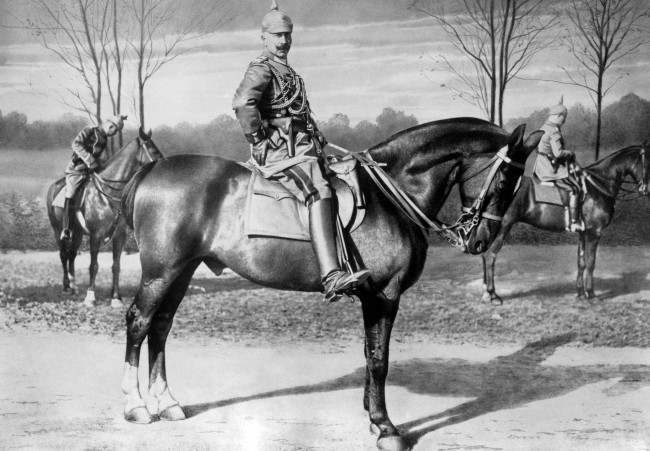
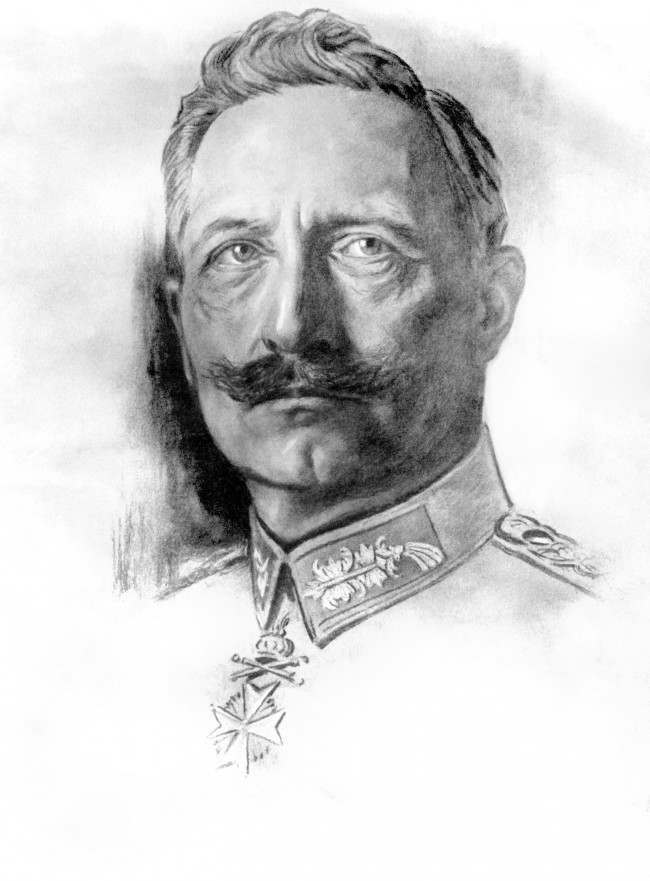
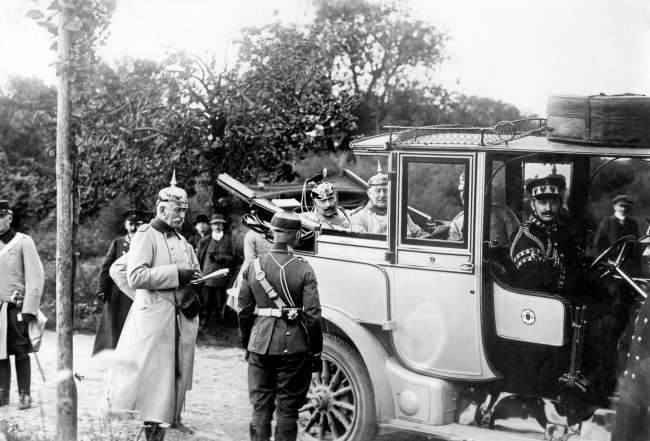
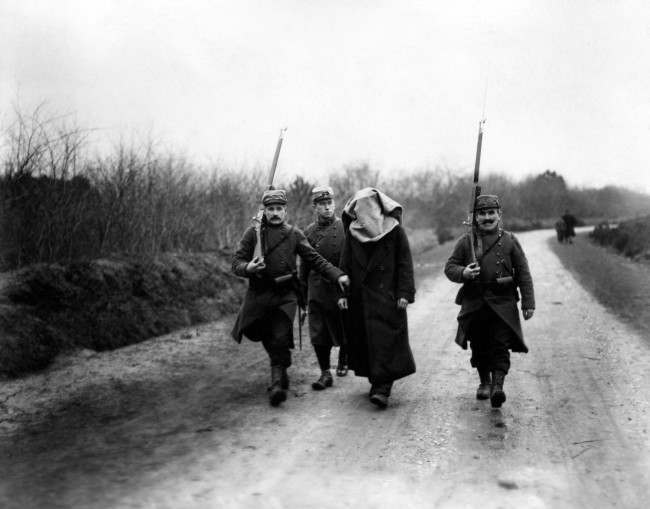
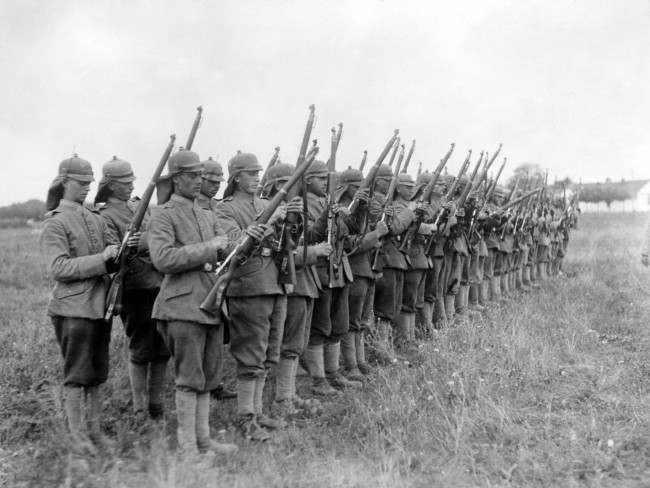
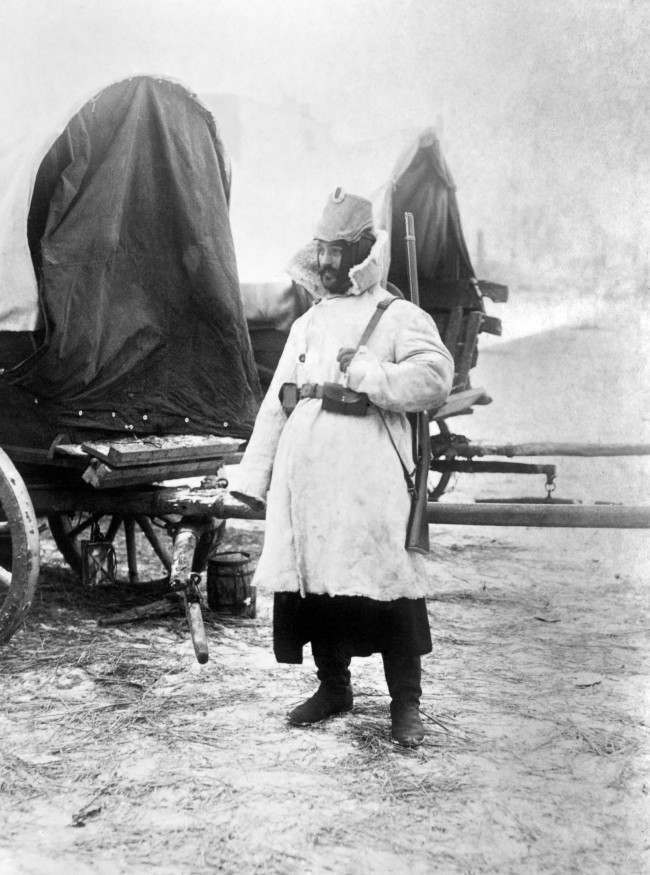
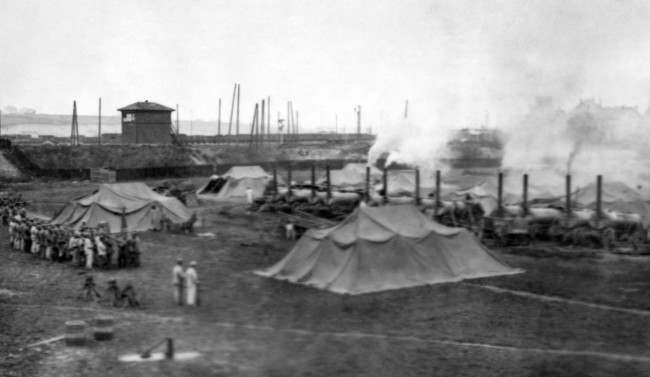
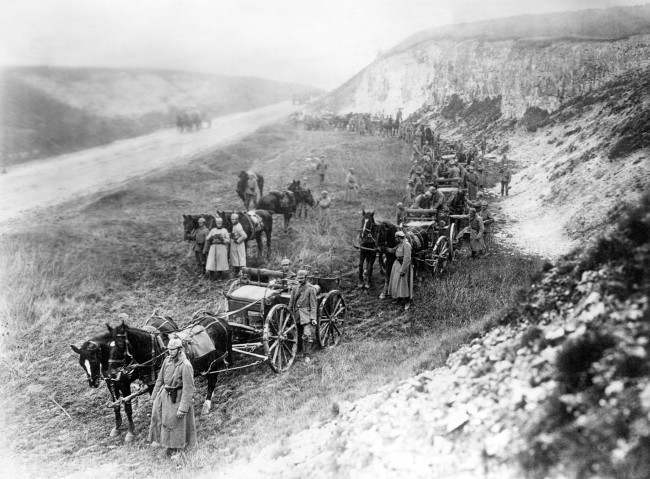
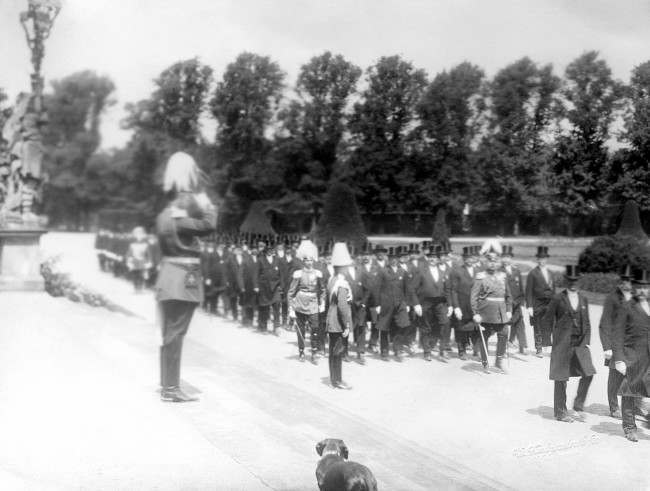
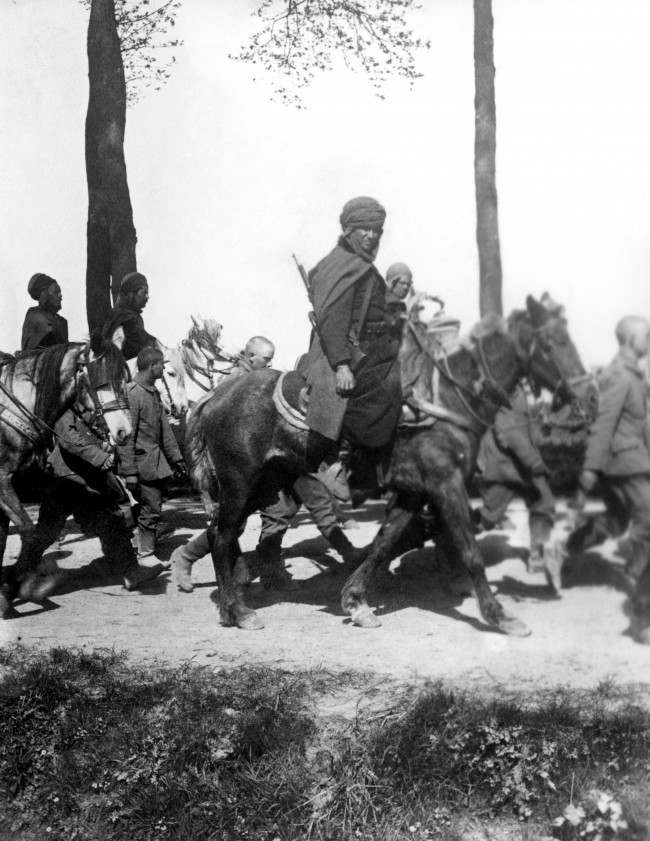
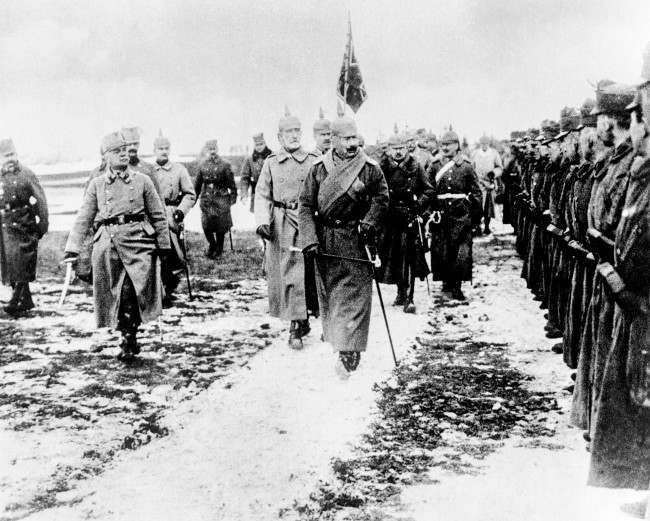
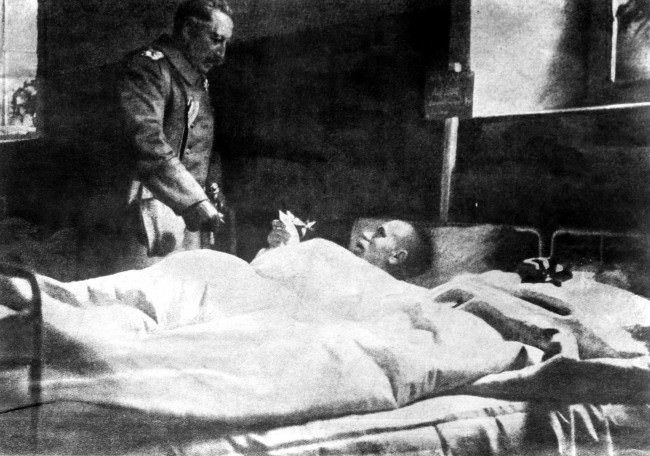
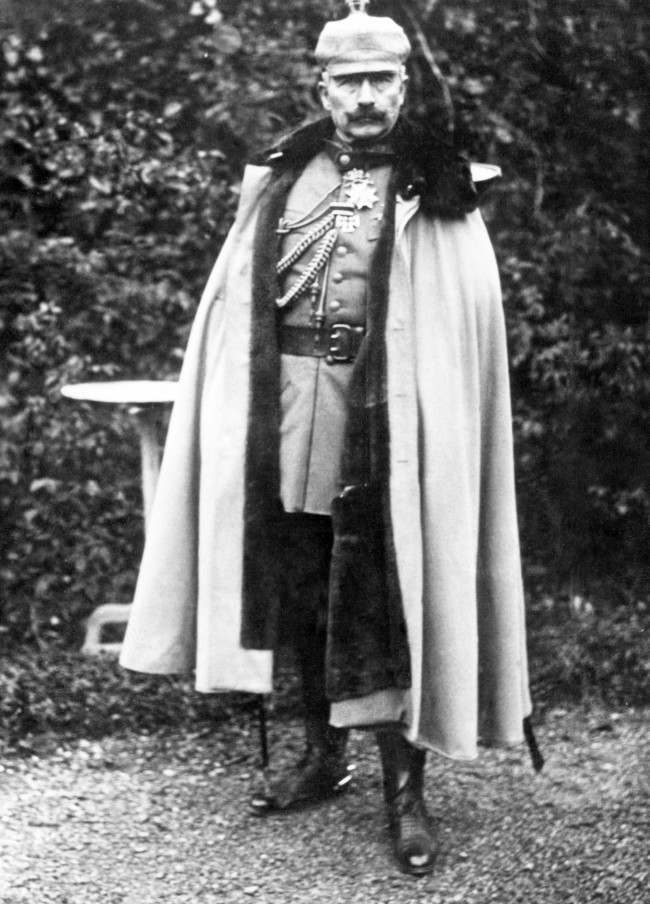
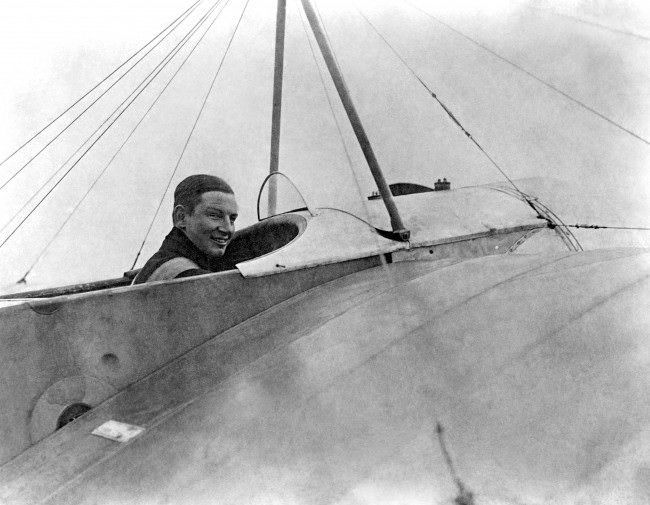
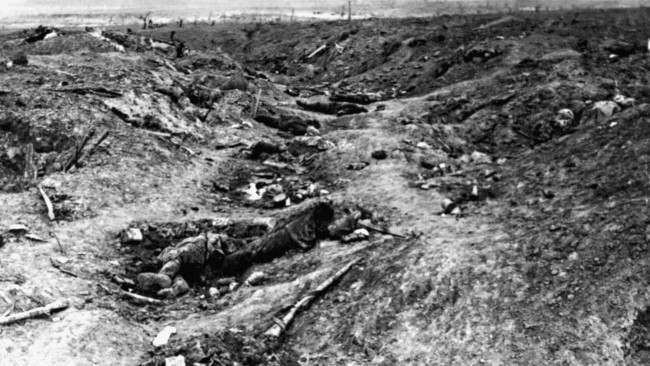
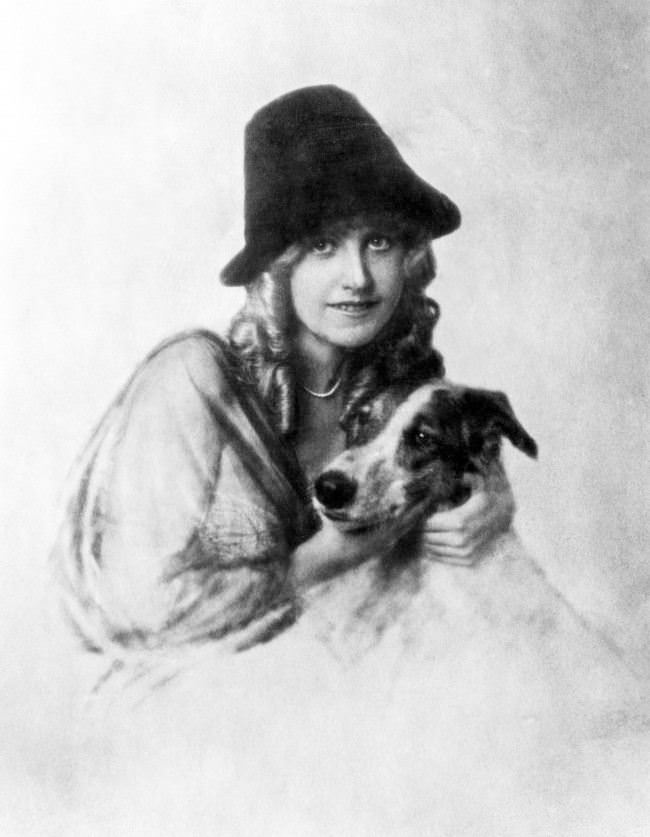
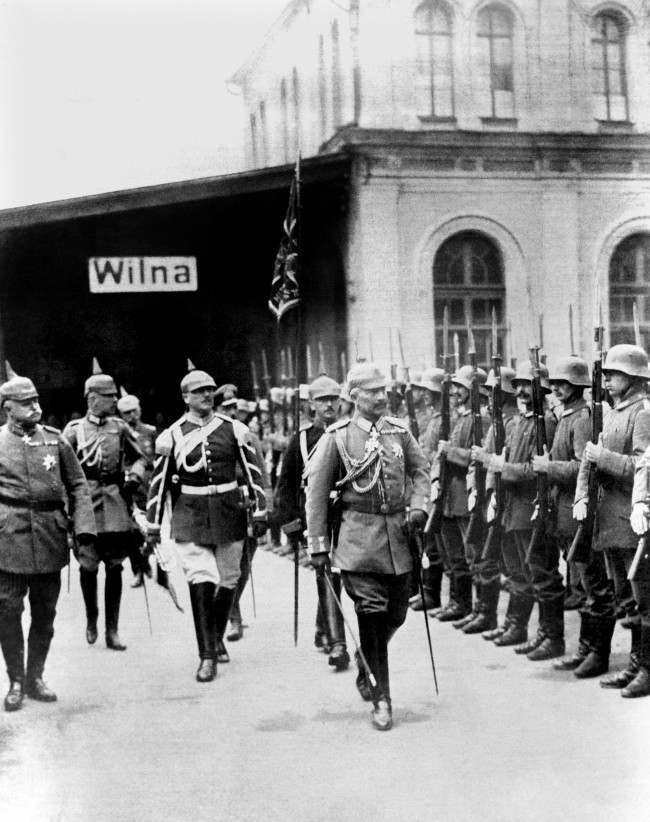
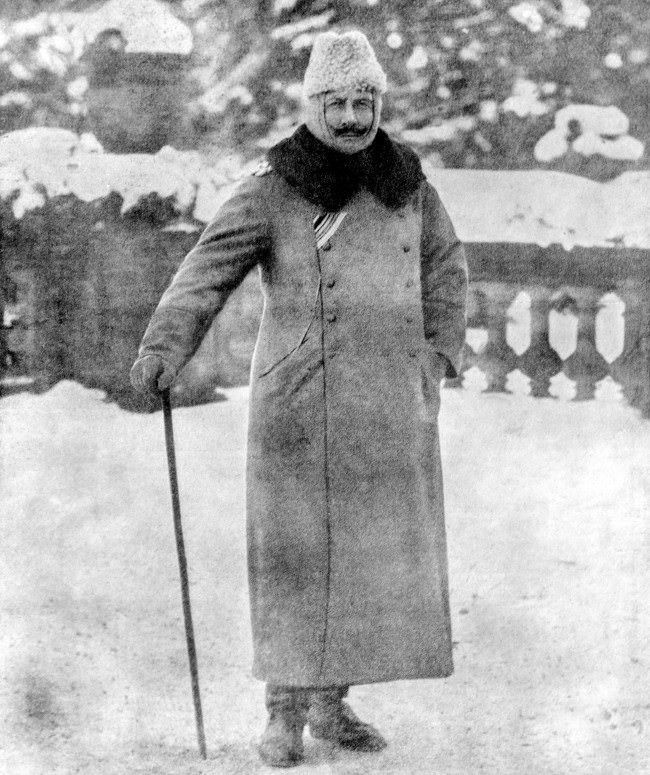
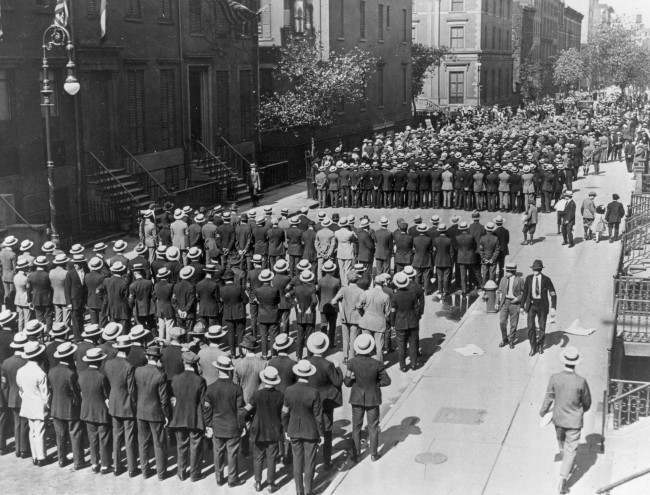
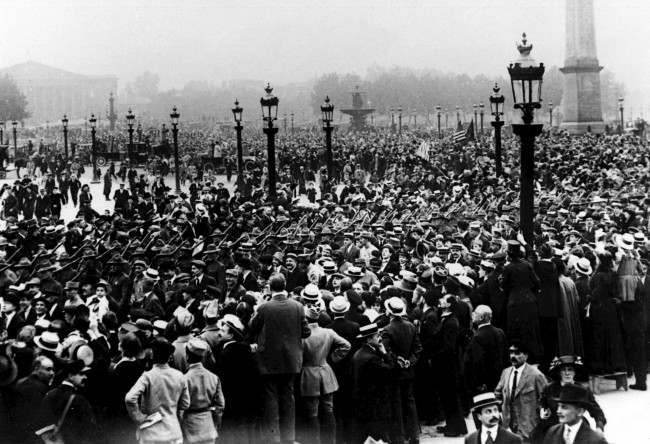
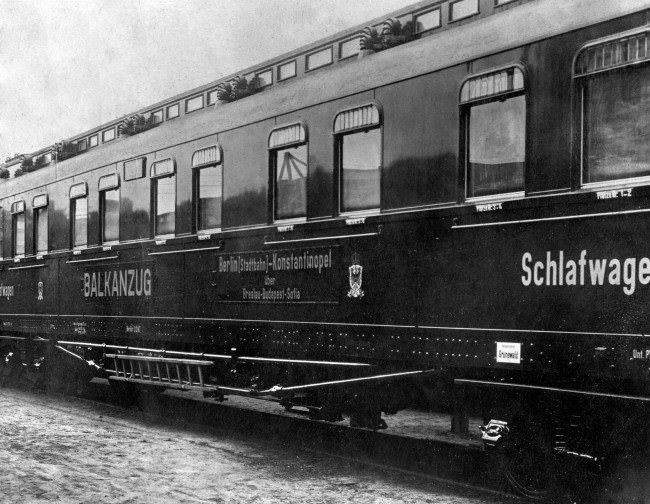
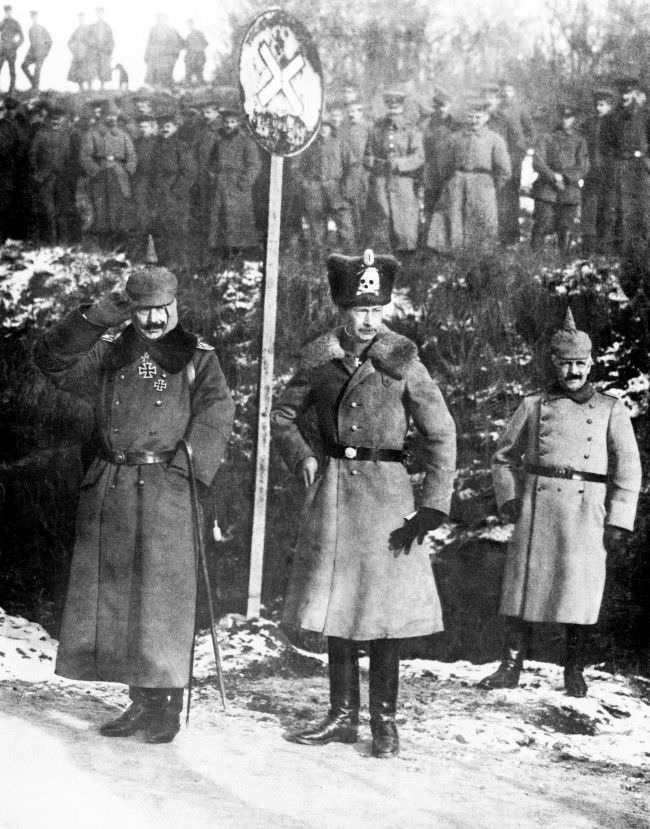
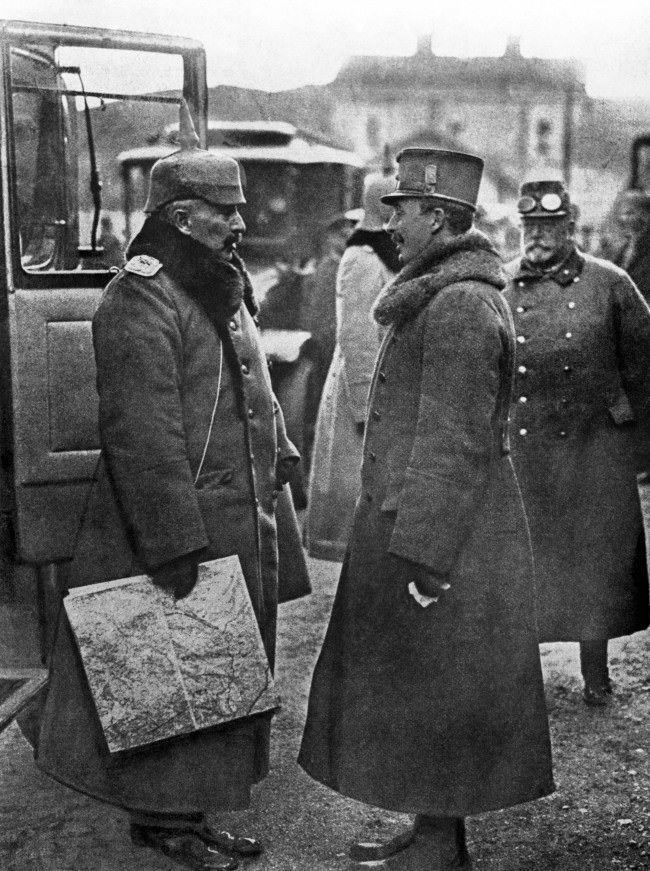
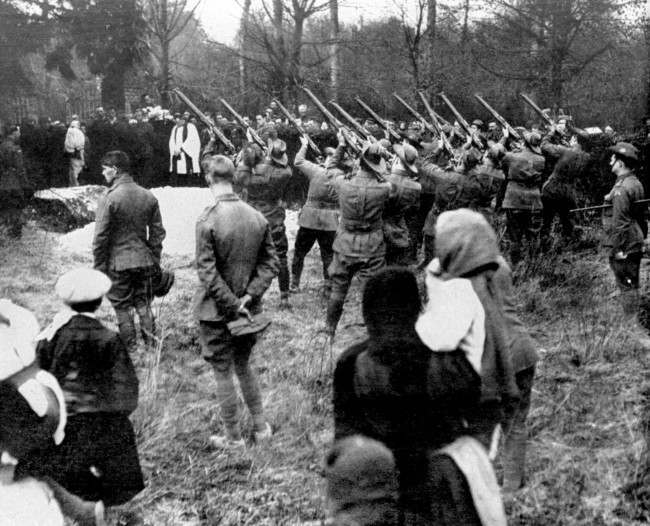
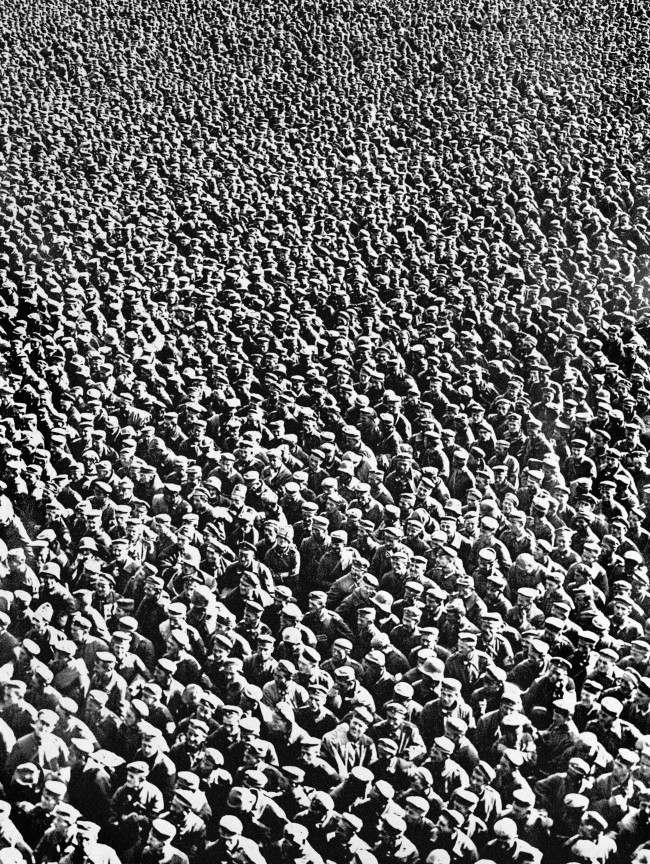
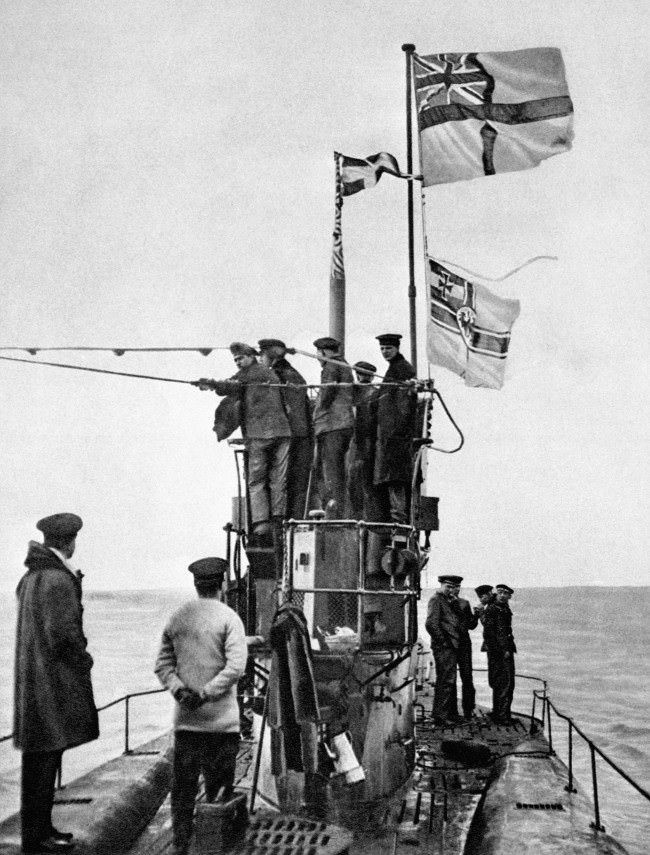
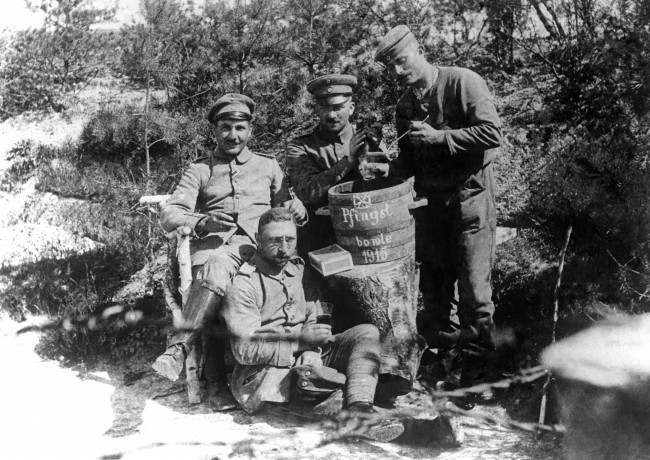
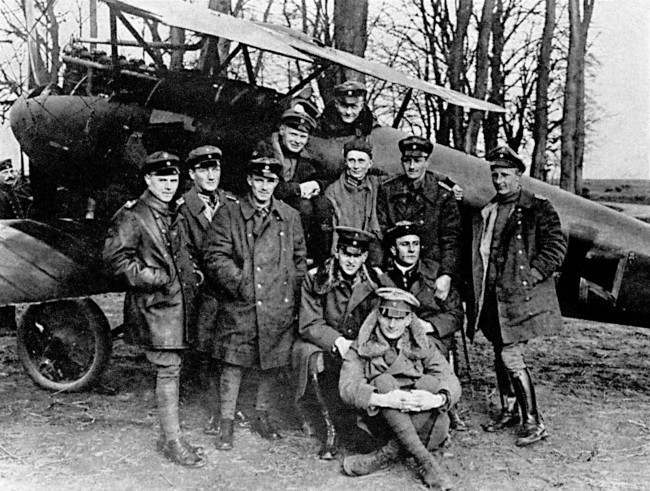

#56
There was no “Red Army” in 1915.
It would have been “Imperial Russian Army” until early 1917.